

Can You Use Tissue Paper to Roll a Joint?

Written by Fraser Horton

Medically Reviewed by Jason Crawford
Article Last Updated on January 6, 2023
If you’ve been using marijuana for a while, you probably have a favorite cannabis consumption method and a favorite place to smoke weed in . Whether you enjoy to vape cannabis concentrates, light the bong, or make some cannabis edibles , you’ll have to agree that the most common and most popular method of consuming weed is rolling a joint. After all, this simple and budget-friendly method of cannabis consumption only requires purchasing your favorite cannabis strain made up of the perfect amount of THC, CBD, and other cannabinoids and terpenes, some rolling papers, and you’re ready to light up.
But there comes a time in the life of every cannabis user when you run out of rolling papers and there’s nowhere to buy them or you’re just feeling lazy, so you’re bound to make do with whatever you have lying around the house to roll a joint with . Your mind goes to any type of paper and leftover recyclable materials that don’t involve you leaving the house, such as regular paper , gum wrappers, phone book paper, cans , and even tissue paper, which is the topic of this article. We’ll give you the answer to the question “Can you use tissue paper to roll a joint” as well as answer the most common questions related to smoking weed with everything but smoking papers, so read on.

Can You Actually Use Tissue Paper to Roll a Joint?
We all know that it’s best to roll your joint with rolling papers, but sometimes you just don’t have one on hand so you need to make do with alternatives. So, let’s give you a few alternatives starting with tissue paper.
Tissue paper is a soft, thin paper which is generally used for wrapping or protecting delicate articles. Since it’s pretty similar to rolling paper, some cannabis users wonder whether it’s possible to substitute the rolling papers with tissue paper when rolling a joint. It definitely is possible, but it can be a bit tricky. Since tissue paper is a bit more delicate than rolling papers, it may be harder for you to roll the joint. Read on to figure out the best way to roll a joint with tissue paper.
How to Use Tissue Paper to Roll a Joint?
As we’ve previously said, tissue paper is thinner than rolling papers, therefore it may burn a little differently. However, there are ways you can make the tissue paper work for you if you want to use it to make a joint, and we’ll give you the exact steps below. In general, the process isn’t that different from using regular rolling papers:
- Take your tissue paper out to prepare it for rolling. Just make sure that it’s uncolored so it doesn’t contain dye.
- Cut the tissue paper into squares sized 68 mm in length and 34 mm in width, which is the size of the standard rolling paper.
- Use your grinder to grind the weed.
- Add a crutch if you’re using one.
- Shape your joint, pinch it between your fingers and start rolling from the crutch towards the end.
- Pack the end of the joint and twist the top so it closes.
- Your joint is ready for your next smoking sesh.
Even if your joint burns a bit faster, you’ll still get a decent smoke without having to go out and purchase rolling papers.
What Happens if You Smoke Paper?
While you may be tempted to use any type of paper as a substitute when you don’t have rolling papers on hand, smoking paper continuously can pose some serious health risks. Plain paper or recycled paper is generally made from wood pulp that can contain over 200 chemicals which are added while processing and manufacturing the paper.
Commonly used chemicals include chlorine, dolomite, DTPA, EDTA, FSA, guar gum, gypsum, hydrogen peroxide, sodium dithionite, chlorine dioxide, ozone, and many more. When burning paper, the toxic chemicals that are often released include nitrogen oxides, sulfur dioxide, volatile organic chemicals (VOCs), and polycyclic organic matter (POMs), which go directly into your lungs if you smoke it.
Can You Die if You Smoke Paper?
As we’ve mentioned above, burning normal paper releases a number of chemicals which are harmful to your body. Paper can also be treated with additional chemicals or ink which make it much more hazardous than smoking untreated paper. It’s also difficult to know what exactly went into the paper during the manufacturing process, but even if a piece of paper is completely free of both chemicals and ink, smoking still results in smoke inhalation which can scar your lungs over time and cause irritation.
While a one-time smoking session where your joint is rolled with paper won’t cause immediate health problems, smoking papers over a longer period of time may damage your lungs and cause you serious side effects. While there are no specific studies related to smoking paper on whether death is one of the outcomes of smoking paper long-term, it’s safe to say that if you start rolling your joints in paper rather than rolling paper specifically made for joints, you will cause a significant amount of damage to your lungs.
Other Alternatives to Rolling Papers
Because a lot of cannabis users get very creative when they don’t have smoking papers or zig zag papers (hemp paper) on hand, they often make DIY marijuana vessels to smoke their weed with. Whether you’re making a spliff (joint that also contains tobacco along with weed), or you’re making a regular joint, you can use the following things:
- Corn husks. Sun-dried corn husks are a great option if you want to use an alternative method to roll your weed. They’re commonly used in Jamaica as a way to smoke weed, so if you can find them where you live, give them a try.
- Rose petals. Another alternative to rolling paper are rose petals. To use them, heat three in a pan for three seconds, connect them, and use them as you would rolling papers.
- Apple pipes. Making a pipe at home has never been easier if you decide to make an apple pipe. To make it, just drill a hole from the top of the apple and drill one on the side that connects to the central hole. Line the top hole with aluminum foil, place the weed inside, and light it. Start smoking from the side hole and you’ll also experience the apple pie flavor as you’re inhaling.
- Hot knives. If you don’t want to DIY anything, this is one of the easiest methods of smoking marijuana. You just need to place the top of your steel knives over a heated hot plate, wait for them to warm up, place the weed on one knife and squeeze it with the other. You’ll notice cannabis smoke coming out of your weed, which means it’s time to start inhaling.

Frequently Asked Questions
Can you roll a blunt with printer paper.
Printer paper isn’t intended to be used instead of cigarette paper or rolling papers since it contains toxic chemicals as ingredients during the manufacturing process. It’s also a thicker paper with a high cellulose content which means you’ll be inhaling much more smoke than if you’d use the standard rolling paper. It’s essential to use the thinnest paper possible when making joints, so printer paper doesn’t fit this requirement.
Can I Use Toilet Paper as Rolling Paper?
While you can’t use the actual toilet paper or paper towels for rolling a joint, you can use the toilet paper roll and make a pipe out of it. Commonly known as the steamroller, your DIY cardboard tube pipe can be made in just a few single steps. First, you’ll need to poke a hole on the side of the paper where you’ll place a makeshift bowl from tin foil (aluminum foil) and you can add the weed on top. Next, you’ll need to place the carb hole on the other side of the roll. Finally, you can light it and enjoy your favorite strain.
Can Smoking Notebook Paper Harm You?
This is another method that a lot of cannabis users try, though it isn’t recommended. Firstly, because smoking paper may result in you inhaling harmful chemicals. Also, if the paper you’re smoking is short, the heat from it may scar your throat. And lastly, notebook paper burns much faster than rolling paper, so your joint may burn out before you’ve inhaled all of the cannabinoids and terpenes.
Can You Use Parchment Paper as Rolling Paper?
Parchment paper is the nonstick paper that you use when baking something in your oven. Because silicone is applied to most parchment paper, it might not be a good idea to use it instead of rolling paper. Furthermore, because parchment paper is designed to be nonstick, once you roll the joint, you won’t be able to seal the seam as you’ll need an adhesive. Your best option is to avoid making this substitution.

A passionate advocate for the benefits of cannabis. Fraser Horton, who has a background in botany and a strong love of nature, has spent years researching how cannabis affects the body and mind. He established Leaf Nation in 2020, where he has devoted himself to educating people about the legalisation of marijuana and its safe and responsible use. Fraser is committed to highlighting cannabis’ potential for improving wellness and working to dispel the stigma associated with its use.
The information presented on this page is provided as a public service to aid in education and is derived from sources believed to be reliable. Readers are responsible for making their own assessment of the topics discussed here. In no event shall Leaf Nation be held reliable for any injury, loss or damage that could happen if using or abusing drugs.
Leaf Nation
Welcome to leaf nation guides.
By clicking “Yes, I'm over 21” affirm under penalty of perjury that you are at least 21 years of age.
The information presented on this site is provided as a public service to aid in education and is derived from sources believed to be reliable. Readers are responsible for making their own assessment of the topics discussed here. In no event shall Leaf Nation be held reliable for any injury, loss or damage that could happen if using or abusing drugs.
{{result.name}}
- The 5 Best Cannabis Rolling Papers
Sunday December 26, 2021
By Michael Walters
- Helpful Guide
- Consumption

W hen it comes to rolling joints , choosing the right paper is highly important. Not only do rolling papers affect the overall smoking experience, but they also play a large factor in how easy it is to roll your cannabis . Many people have a favorite rolling paper brand and claim that their papers are the easiest for them to roll with. Of course, everyone is different and has their own rolling preferences, making it difficult to definitively label one rolling paper as better than another. However, there are a few brands that stand out from the rest. Below, we’ve curated a list of the most popular rolling papers on the market.
Related Articles
- Joint Rolling Machines or Hand-Rolled?
- Beginner Tips for Rolling Better Joints
- Rolling Trays: A Complete Guide
- The 14 Best Rolling Papers for Better Joints
Please note that what rolling paper you choose to use is ultimately personal preference. There are many great brands out there and finding which one suits your style best is a fun and exciting path. So, check out the papers on this list and try them out! You might just discover your new lifelong favorite. Above all, roll some joints up and enjoy!
Top Rolling Papers for Marijuana Joints
What rolling papers are easiest to roll, how do you pick out rolling papers, do you need filter tips for rolling papers, do rolling papers expire.
Elements rolling papers are loved among many cannabis consumers. The love for them stems from more than one reason, too. For instance, they are made with natural materials like rice and sugar and they don’t contain any harsh burning agents. Once Elements rolling papers are burned, the only ash left over is the gum that caramelizes as it’s cooked. That’s a good sign that you’re smoking a quality paper.
Another good sign is that Elements don’t easily run. They’re embedded with a proprietary criss-cross watermark that helps keep the burn even across the life of the joint.
From their slow burn hemp paper to their ultra-thin rice papers, even the packaging of Elements rolling papers is appealing. The aesthetics of their boxes beautifully matches the quality of the papers on the inside. While the rice papers are a bit more difficult to roll than the hemp papers, their thin profile, smooth taste, and effective burn make Elements rolling papers a staple for cannabis consumers around the world.
No dyes, no chalk, no burn additives. RAW natural rolling papers are what their name claims to be: raw rolling papers. They’re unbleached and unrefined products made solely out of plant material. As a result, not only are they easy to roll with, but they also add very little taste to your joint.
If you’re looking for a paper that gives you both a clean burn and a clean conscience, then consider RAW rolling papers. Why? The RAW Foundation donates meals to children in famished communities, provides fresh water and filters to folks impacted by natural disasters, and even sponsors an orphanage in Bali, Indonesia. RAW produces charismatic rolling papers because their leaders are thoughtful individuals. Their charity is a great part of their company, it’s just a bonus that their rolling papers are top-of-the-line for a cannabis consumer looking for an easy roll and a pleasant smoke.
OCB claims to be the thinnest rolling paper in the world. My ruler has a difficult time measuring the accuracy of that claim, but there’s no doubt the OCB makes some of the best rolling papers out there. OCB has been around for 100 years, and for good reason. Usually, such a thin paper might tear or be difficult to control, but OCB has perfected the art of creating thin, easy-to-work-with papers.
Over their 100 years, they’ve created paper for French bibles, letter paper, and cotton paper, among others. In 1999, however, they officially started what is now their most iconic line: OCB Premium rolling papers. They’ve withstood the test of time because they burn clean and add nothing more than what they call ‘an American taste’ to a joint. Since their OCB Premium papers were launched, they’ve added on X-Pert papers, Organic Hemp papers, and even created biodegradable, unbleached filters.
Juicy Jay’s
Juicy Jay’s started in the Big Apple (a juicy apple at the time), in the 1980s. The creators had a deep love for all things from the ’80s like 5.0 Mustangs, gold rims, and LL Cool J. With their love of ugly cars and music that hasn’t withstood the test of time, they scouted New York City in search of their idol. Without finding LL Cool J, the creator of Juicy Jay’s was still granted a new nickname that eventually inspired the name of the rolling papers themselves.
Not only are they easy to roll with, but Juicy Jay’s also make this list because they taste fantastic. From watermelon to blueberry to peanut butter to root beer, there is a flavor for every person. There’s even a flavor that harkens back to 80’s music: Vanilla Ice. Easy to roll with and adding extra flavor to your joint, Juicy Jay’s simply look cool and can add just the right amount of flare to a smoke session. With bright colors and fashionable design, Juicy Jay’s catch the eye and the love of people who like smoking joints.
Zig Zag - ‘Oranges’
Yes, they’re a bit thicker than the other papers on this list. Yes, they burn a bit faster than other papers on this list. Yes, they add a bit more ash and unnecessary flavor to joints than other papers on this list. So why do Zig Zag 1 ¼ inch papers that come in their classic orange box make it to the last spot on this list? One word: accessibility. These papers are everywhere. You can find them in virtually every gas station, they’re cost-effective, and they’re your best option when you can’t find any of the other brands on this list. Furthermore, they’re likely one of the easiest papers to learn to roll with .
Randy’s Wired Rolling Papers
While not as popular with modern joint smokers, Randy’s wired rolling papers are a timeless classic offering a functional approach. These papers have been proudly produced in the USA since 1975 and the wired design makes them ideal for beginners since it has a more rigid structure than a loose leaf of paper.
The stainless steel wire also serves as a handle for better gripping of the roach as the joint burns down. Say goodbye to awkward passes and difficulty consuming the last bits of your joint (for those who roll without filters) by using Randy’s!
Shine 24k Gold Rolling Papers
If you’re a fairly seasoned cannabis consumer then odds are you’ve come across a Shine paper before. Made from a blend of edible 24K gold and hemp, these rolling papers are a stylish option for those looking to spice things up or celebrate a special occasion.
With plenty of sizes, styles and variations, Shine papers are a unique way to consume cannabis and sure to spark conversation during your next smoke session.
Curved Papers
These patented papers are perhaps the most unique offering on our list. As the name implies, Curved papers have a unique design with careful curvature to help roll better joints that burn evenly. Curved papers are perfect for beginners and help rollers better “tuck” in their cannabis, a step that is often difficult with square papers.
Created by MIT graduate Michael O’Malley, Curved rolling papers are made in New York state and available in several different sizes. Give them a try if you’re looking for something new!
Let’s face it. Everyone rolls joints differently (check out the video below to see how PotGuide rolls their joints) which makes it difficult to truly crown one brand champion of “easiest papers to roll with.” That said, there are certainly products out there with ease of use and beginner joint rollers in mind. Randy’s, Zig-Zags and Curved papers are all fairly well-known for being easy to roll with and are recommended often for those just starting their joint rolling careers.
At the end of the day, the easiest rolling papers are the ones that feel most comfortable in your hands. Try a few different brands out and be sure to note which ones you were pleased with and which ones fell short of expectations. The good news is that rolling papers don’t change all that often so if you find a brand you like odds are you’ll be able to match rolling consistency time after time.
Choosing your rolling papers can be an arduous task, especially with the amount of options available. The good news is reading this article is a great first step!
Instead of going in blindly and facing decision paralysis , harness the power of online reviews and anecdotal experience of peers. That way you’ll have a better idea of what’s out there and what you might be interested in before you have to make a purchase. Don’t worry though, rolling papers are relatively inexpensive (Roughly $1.50 to $3.50 per pack) so there’s no harm in doing some trial and error.
Beyond trying them out and rolling with them, another important factor to consider when selecting rolling papers is the taste and experience of actually smoking them.
Do they give off an added flavor? Can you taste the flower you rolled or does the burnt paper mask your weed’s terpenes? Is the burn even or does the joint canoe (careful here, as your own rolling skills play a factor in even burning as well)? Take notes while you smoke your joints and try to determine which papers resulted in the best experiences. You can also make things more fun by inviting friends into the fold and having a rolling paper party!
Adding a filter tip , or crutch, to your joints can result in an elevated smoking experience but it is definitely not necessary for a quality roll. That being said, filter tips can add extended tactility to your joint and help you smoke all of the weed that was rolled without any going to wast.
Filter tips can also help increase airflow, resulting in a more consistent drag and even burn throughout. With better airflow also comes increased flavor potential and the avoidance of resin build up at the mouthpiece. So, while not completely necessary most veteran consumers will argue that a filter tip is essential for a more refined experience.
The makeup of rolling papers is fairly simple and typically doesn’t contain any compounds that will mold or rot. That said, the most important element of a rolling paper in terms of function is the adhesive strip that seals your joint when licked.
Rolling paper adhesive does have decent longevity, especially if the papers are kept in a cool, dry environment. However, adhesive can certainly degrade over time and become less sticky when wet. In this instance, a paper would not really be expired but it would be difficult to roll successfully with.
As long as you keep your rolling papers in their packaging, free of moisture and away from sunlight their lifetime should be indefinite.
What’s your favorite brand of rolling paper and why? Let us know in the comments below!
Photo Credit: Gabriel Côté ( license )
Starting a Cannabis Business? These Resources Can Help
Cbd hemp flower: everything you need to know, 18th annual emerald cup awards honors woody harrelson in hollywood, cannabis consumption lounges: are they making a comeback, g4 live & budtender awards take over las vegas, looking back: 4/20 with rubi rose and plant galaxy, wiz khalifa hosts exclusive wiz & friends x knights gaming event in los angeles, 40 tons: a cannabis brand making a difference (part 2), are you of legal age for recreational marijuana or hold a valid medical marijuana card.

- Posted on 2023-10-20
The Cannabis Guide: Rolling & Smoking a Perfect Weed Joint
Welcome to our comprehensive guide on rolling and smoking a weed joint! Whether you’re a seasoned cannabis enthusiast or a curious beginner, this blog post is here to provide you with all the information you need to roll and enjoy a perfect joint.
In this guide, we will walk you through the basics of what a weed joint is and how to prepare your cannabis for rolling. We will also cover the step-by-step process of rolling a joint, including tips and tricks for achieving the perfect roll. Finally, we will explore the proper techniques for smoking a joint, emphasizing safety and responsible use.

Understanding the Basics: What is a Weed Joint?
Before diving into the rolling and smoking process, it’s important to understand what exactly a weed joint is. A joint is a method of consuming cannabis by rolling the dried flower into a cylindrical shape using rolling papers. It is one of the most popular and traditional ways of enjoying cannabis.
How to Prepare Your Cannabis for a Joint
Preparing your cannabis for rolling is a crucial step in ensuring a smooth and enjoyable smoking experience. We will discuss the importance of grinding your cannabis and the tools needed for this process. By breaking down your cannabis into smaller pieces, you will ensure an even burn and maximize the flavor and potency of your joint.
How to Roll Your Weed Joint
Rolling a joint may seem intimidating at first, but with the right technique and practice, you’ll be rolling like a pro in no time. We will guide you through the process of choosing the right rolling paper, as well as the step-by-step instructions for rolling a perfect joint. Additionally, we will share some handy tips and tricks to make the rolling process easier and more efficient.
How to Smoke Your Weed Joint
Once you’ve rolled your joint, it’s time to light up and enjoy the fruits of your labor. We will cover the correct way to light your joint, ensuring an even burn and avoiding any unnecessary waste. We will also discuss proper inhaling techniques to maximize the effects of cannabis and provide a smooth smoking experience. Finally, we will explain how to properly ash your joint for a clean and hassle-free smoking session.
Safety and Legal Considerations
As with any substance, it’s essential to be aware of the safety and legal implications of consuming cannabis. We will delve into the legal landscape surrounding cannabis use, including any relevant regulations and restrictions. Additionally, we will address the potential health risks associated with smoking and provide safety precautions to minimize any adverse effects. Finally, we will emphasize the importance of responsible cannabis use to ensure a positive and enjoyable experience.
So, whether you’re a beginner looking to learn the basics or an experienced smoker seeking to refine your skills, this comprehensive guide is your go-to resource for rolling and smoking a weed joint. Let’s dive in and explore the world of joint rolling together!
A weed joint, also commonly referred to as a joint, is a popular method of consuming cannabis. It involves rolling the dried flower buds of the cannabis plant into a cylindrical shape using rolling papers. Joints are a traditional and widely recognized way of enjoying cannabis, offering a convenient and portable option for consumption.
The key components of a weed joint include the cannabis flower, rolling papers, and a filter (also known as a crutch or tip). The cannabis flower is the main ingredient, providing the desired effects and flavors. Rolling papers are thin, lightweight papers designed specifically for rolling joints. They come in various sizes, materials, and flavors, allowing users to customize their smoking experience. The filter, typically made of cardboard or a similar material, is placed at the end of the joint to provide stability, improve airflow, and prevent the inhalation of loose cannabis particles.
Weed joints offer several advantages for cannabis enthusiasts. Firstly, they provide a convenient and discreet method of consumption, allowing individuals to enjoy cannabis on the go. Joints can be easily carried in a pocket or a small container, making them suitable for various settings and occasions. Additionally, joints are relatively quick to prepare and do not require additional equipment or accessories.
Furthermore, joints allow users to experience the full flavor profile of the cannabis strain they are consuming. The rolling papers used in joints are typically tasteless, allowing the natural flavors and aromas of the cannabis to shine through. This makes joints an excellent choice for those who appreciate the nuanced flavors of different cannabis varieties.
It’s important to note that there are various types of joints that can be rolled, depending on personal preference and desired effects. Some popular variations include the classic joint, which consists of ground cannabis rolled in a single paper, and the cross joint, which involves connecting two joints together. These variations offer different smoking experiences and can be a fun way to experiment with joint rolling techniques.
Overall, weed joints are a versatile and timeless method of consuming cannabis. They provide a convenient and customizable smoking experience, allowing users to enjoy the full benefits and flavors of the cannabis plant. In the following sections, we will delve deeper into the process of preparing, rolling, and smoking a weed joint, equipping you with the knowledge and skills to enjoy this classic cannabis consumption method.

Preparing your cannabis for a joint is an essential step in ensuring a smooth and enjoyable smoking experience. Proper preparation involves grinding the cannabis flower to achieve an even consistency and maximize the flavor and potency of your joint. In this section, we will discuss why grinding is important, the tools needed for grinding, and the process of grinding your cannabis.
Why Grinding Your Cannabis is Important
Grinding your cannabis before rolling a joint offers several benefits. Firstly, grinding breaks down the flower into smaller, uniform pieces, allowing for a more even burn. This ensures that the joint burns evenly, preventing any uneven hotspots that may affect the smoking experience.
Additionally, grinding increases the surface area of the cannabis, which enhances the extraction of cannabinoids and terpenes. These compounds are responsible for the effects and flavors of cannabis, so maximizing their extraction will result in a more potent and flavorful joint.
Tools Needed for Grinding
To prepare your cannabis for a joint, you will need a few tools:
- Grinder: Grinders are specifically designed for grinding cannabis and consist of two interlocking pieces with sharp teeth. They come in various materials, including metal, plastic, and wood. Grinders provide a quick and efficient way to grind your cannabis to the desired consistency.
- Scissors and a chopping board: If you don’t have a grinder, you can use a pair of sharp scissors and a chopping board. Simply place the cannabis buds on the board and chop them finely with the scissors until you achieve the desired consistency.
The Grinding Process
Here’s a step-by-step guide on how to grind your cannabis:
- Break down the larger cannabis buds into smaller, manageable pieces. This will make the grinding process easier and more efficient.
- If using a grinder, remove the lid and place the cannabis buds in the grinding chamber. Be careful not to overfill it, as this may make grinding less effective.
- Close the grinder tightly and twist the top and bottom sections in opposite directions. The sharp teeth inside the grinder will shred the cannabis into smaller pieces as you twist.
- Continue twisting the grinder until you achieve the desired consistency. For joints, a medium-fine grind is generally recommended.
- If using scissors and a chopping board, place the cannabis buds on the chopping board. Hold the scissors with one hand and chop the cannabis into small pieces, moving the scissors back and forth until you achieve the desired consistency.
Once you have ground your cannabis to the desired consistency, you are ready to move on to the next step: rolling your weed joint. In the following section, we will guide you through the process of choosing the right rolling paper and rolling a perfect joint.

Rolling a weed joint may seem daunting at first, but with some practice and guidance, you’ll be rolling like a pro in no time. In this section, we will cover the steps to roll a perfect joint, including choosing the right rolling paper, preparing the joint, and mastering the rolling technique.
Choosing Your Rolling Paper
Selecting the right rolling paper is crucial for a successful joint. Consider the following factors when choosing your rolling paper:
- Size: Rolling papers come in various sizes, ranging from small (1 ¼ inch) to large (King size). The size you choose depends on personal preference and the amount of cannabis you wish to include in your joint.
- Material: Rolling papers are commonly made from materials like rice paper, hemp, or wood pulp. Each material offers a slightly different smoking experience, so experiment to find the one you prefer.
- Flavor: Some rolling papers come with added flavorings like fruit or herbal essences. These can enhance the taste of your joint, but be mindful that they may alter the natural flavors of the cannabis.
Steps to Rolling a Perfect Joint
Now, let’s dive into the step-by-step process of rolling a weed joint:
- Prepare your rolling materials: Gather your ground cannabis, rolling papers, and a filter (optional).
- Create a crutch or filter (optional): A crutch, also known as a filter or tip, provides stability to the joint, improves airflow, and prevents the inhalation of loose cannabis particles. You can create a crutch by rolling a small strip of cardboard or using a premade filter tip.
- Place the rolling paper: Hold the rolling paper with the adhesive strip facing up. If using a crutch, place it at one end of the rolling paper, leaving a small gap between the crutch and the edge of the paper.
- Distribute the cannabis: Evenly distribute the ground cannabis along the length of the rolling paper, ensuring it is spread out uniformly. Leave some space at the end where you will seal the joint.
- Shape and tuck: Using your fingers, shape the cannabis into a cylindrical form. Begin tucking the rolling paper around the cannabis, using your thumbs and index fingers to roll it tightly. Apply gentle pressure to pack the cannabis as you roll.
- Lick and seal: Once the joint is tightly rolled, moisten the adhesive strip of the rolling paper with your tongue. Seal the joint by pressing the adhesive strip firmly against the paper, ensuring it sticks securely.
- Optional finishing touches: You can twist the open end of the joint to keep the cannabis securely in place or use a pen or similar object to pack the cannabis more tightly if desired.
Congratulations! You have successfully rolled a weed joint. Now, it’s time to move on to the next section, where we will explore the proper techniques for smoking your joint and enjoying the full experience of cannabis consumption.

Now that you have rolled your weed joint, it’s time to learn the proper techniques for smoking it. In this section, we will cover the steps to light your joint correctly, the proper inhaling techniques, and how to ash your joint for a clean and enjoyable smoking experience.
Lighting Your Joint Correctly
- Choose your lighting method: You can use a lighter or matches to light your joint. If using a lighter, opt for a butane lighter to avoid any unwanted flavors or chemicals.
- Position the joint: Hold the joint between your thumb and index finger, with the open end facing your mouth.
- Toast the end: Gently rotate the joint while holding the flame to the open end. This will heat and toast the cannabis, preparing it for an even burn.
- Light the joint: Once the end is toasted, bring the flame closer and inhale gently while simultaneously applying the flame to the edge of the joint. Ensure the flame touches the cannabis evenly to create a smooth burn.
- Rotate and inspect: Continue rotating the joint as you light it, ensuring an even burn across the entire circumference. Inspect the burn to make sure it is even and adjust as necessary.
Proper Inhaling Techniques
- Take slow and steady draws: Inhale slowly and steadily, allowing the smoke to fill your mouth before inhaling it into your lungs. This technique helps prevent harsh hits and allows for better control of the amount of smoke you inhale.
- Hold briefly, then exhale: After inhaling, hold the smoke in your lungs for a few seconds to maximize absorption. Exhale slowly and steadily, enjoying the release of smoke.
- Pace yourself: Take your time between hits to avoid overwhelming yourself. Allow the effects to settle before taking another puff.
How to Ash Your Joint
- Tap or gently flick the ash: As you smoke, the joint will accumulate ash at the tip. To prevent excess ash from falling onto your clothes or surroundings, tap or flick the joint gently to remove the ash.
- Use an ashtray or designated container: To keep your smoking area tidy and prevent any accidental fires, use an ashtray or designated container to collect the ash. This ensures safe disposal and minimizes mess.
Remember, it’s important to smoke responsibly and in accordance with your local laws and regulations. Be mindful of your surroundings and those around you, ensuring a considerate and enjoyable experience for everyone involved.
Now that you are equipped with the knowledge of how to properly smoke your joint, let’s move on to the final section, where we will explore safety and legal considerations related to smoking cannabis.

When it comes to smoking cannabis, it’s important to be aware of the safety and legal considerations. In this section, we will discuss the legal implications of cannabis use, health risks, and safety precautions to ensure responsible consumption.
Understanding the Legal Implications
Cannabis laws vary from country to country and even within different states or regions. It is crucial to familiarize yourself with the laws and regulations regarding cannabis in your specific location. This includes knowing the legal age for consumption, possession limits, and any restrictions on public or private use. Stay informed and abide by the laws to avoid any legal consequences.
Health Risks and Safety Precautions
While cannabis can provide various benefits, it’s essential to be aware of potential health risks associated with smoking. Here are some considerations:
- Respiratory Health: Smoking cannabis, like any other plant material, can irritate the lungs and respiratory system. Prolonged and heavy smoking may lead to respiratory issues. Consider alternative methods of consumption, such as vaporizers or edibles, to minimize potential harm.
- Impaired Coordination and Judgment: Cannabis can impair coordination, cognition, and judgment. Avoid driving or operating heavy machinery while under the influence of cannabis, as it can compromise your safety and that of others.
- Allergic Reactions and Sensitivities: Some individuals may experience allergic reactions or sensitivities to cannabis or certain strains. If you have known allergies or sensitivities, exercise caution when trying new strains and pay attention to any adverse reactions.
To ensure a safe and enjoyable experience, consider the following safety precautions:
- Start Low, Go Slow: If you are new to cannabis or trying a new strain, start with a small amount and gradually increase your intake. This allows you to gauge your tolerance and minimize the risk of overconsumption.
- Choose a Comfortable Environment: Find a comfortable and familiar setting to smoke your joint. Being in a relaxed and safe environment can enhance the overall experience and reduce any potential anxiety or discomfort.
- Use Quality Cannabis: Purchase cannabis from reputable sources to ensure quality and safety. Knowing the source and quality of your cannabis can help minimize the risk of consuming contaminated or low-quality products.
- Respect Others: Be mindful of those around you and respect their boundaries. Not everyone may be comfortable with the smell or presence of cannabis, so be considerate of others’ preferences and privacy.
Remember, responsible use of cannabis involves moderation, respect for others, and compliance with legal regulations. It’s always a good idea to stay informed, educate yourself about the potential risks and benefits, and make informed decisions about your cannabis consumption.
With this comprehensive guide, you now have the knowledge and understanding to roll and smoke a weed joint confidently and responsibly. Enjoy your cannabis experience, and may it bring you relaxation, creativity, and enjoyment.
Shop legal, local weed.
We use cookies for certain features and to improve your experience. See our Cookie Policy and Privacy Policy to learn more
By accessing this site, you accept the Terms of Use and Privacy Policy .
- Cannabis 101
- Strains & products
- Science & tech
- Leafly Lists
Everything you need to know about rolling papers, explained
There’s nothing like a joint. While there are many perfectly acceptable ways to consume cannabis, a joint is an art. They’re easier to roll than you think, but that extra bit of effort makes it that much more satisfying to smoke.
It all starts with your favorite strain and the perfect rolling paper—and while you probably have the cannabis covered, picking out a paper from all the options on the market can seem overwhelming. Once you know the basics, though, you’ll be discovering your joint-rolling talent in no time.
Choose your fiber
Traditional wood-pulp papers are a classic for a reason: They’re the easiest to roll and are incredibly sturdy. While they’re the fastest, simplest way for a beginner to get a joint together, they burn fast and hot, though, so you can end up with a joint that smokes too quickly or unevenly.
There’s something nice about rolling a hemp joint—you’re just adding more cannabis on top of the cannabis. Hemp papers are thin, sturdy, and easier to roll than other plant fibers, and the mild flavor won’t disrupt the natural taste of your cannabis. They are a little trickier to work with than wood pulp, but they’re a great place to start branching out. Hemp is an ultra-sustainable crop, so it’s a great choice for the environment, too.
For a sustainable option, Zig-Zag’s hemp rolling papers are made with fibers from organic farms.
Rice papers are tricky, but incredibly rewarding, because of their ultra-thin profile. They can be a little slippery, but they burn slow—and look really cool.
Flax paper is the best of all worlds: thin like rice, but easy to roll like wood pulp or hemp. Because of their low profile, flax joints have less combustion, so you’re tasting less smoke and more of the good stuff.
Fiber blends
Each rolling paper material has its benefits and drawbacks, so sometimes the best choice is a blend. Zig-Zag usually blends wood pulp with other natural plant fibers for an easy roll and a slow, even burn. Their famous white papers and classic orange packs are made from natural flax fibers.
To bleach or not to bleach?
While there’s a lot of chatter in stoner circles about whether unbleached papers are safer, there’s really one main difference between the two: color.
While some have mistakenly claimed that “unbleached” means that white papers are made with household bleach or something like it, this is not the case. Zig-Zag white papers use an oxygenation process that leaves no residue of any kind on the paper. There is no “bleach” or chlorine used in the whitening process. “Unbleached” simply means the papers skip this step which means the paper has that natural hue of the fibers versus a classic white look.
If you love the tried-and-true white and orange packs, you can smoke them with confidence. But for customers that prefer unbleached, Zig-Zag has you covered. Their standard 1.25-inch papers are available unbleached , but just as easy to roll and satisfying to smoke. If you prefer to roll bigger, the ultra-thin King Slim unbleached papers have you covered. Even the packaging is unbleached and decorated with vegetable inks.
Zig-Zag’s full line of organic hemp papers are all unbleached, just as nature intended.
The glue that holds it all together
You need your joint to stick together, but built-in adhesives on rolling papers can hide a lot of chemicals. If a rolling paper doesn’t have its glue ingredients listed, it’s best to stay away.
Zig-Zag uses 100% gum arabic adhesive, which is a kind of tree sap. It’s the same stuff used on postage stamps, and provides an all-natural, secure hold.
There are other all-natural options—some rollers use glue made from sugar. Gum arabic is the clear choice for both safety and dependability.
What to know about novelty papers
Rolling joints is fun, and mixing it up with the occasional flavored or colorful paper seems harmless. But take a second look before you wrap your Grape Ape in some grape flavor. Recent research showed that flavored blunt wraps were much higher in pesticides, lead, and other contaminants than other rolling papers. Cellulose paper, which is clear to show off the herb inside, had the highest levels of contaminants.
It’s best to go with a trusted brand if you want to add a little whimsy to your joints. Or better yet, try some advanced-level joint rolling, like an L-joint or tulip . Some extra-creative rollers have even made scorpions .
If you want to see your weed while you’re smoking it, try an ultra-thin paper, like Zig-Zag’s translucent ultra-thin papers, instead.
Added convenience
No time or energy to roll a joint today? Sick of inhaling shake? Cones, like Zig-Zag’s standard, unbleached, and king-sized cones, are a really easy option—you just stuff and twist for a thick, secure joint. If you just want to make joint-rolling a little easier, those little cigarette-rolling devices work just as well for cannabis, too.
Ready to start rolling? There’s no greater authority on rolling papers than Zig-Zag. The iconic company has been a staple of hand-rolled cigarettes and joints. Zig-Zag is so deeply ingrained in cannabis culture that Dr. Dre featured them on the album cover for The Chronic. If your great-grandpa smoked, chances are he used Zig-Zags. Zig-Zag’s bundles are there to get you started, complete with rolling trays with the iconic design.
The latest in Cannabis 101
By providing us with your email address, you agree to Leafly's Terms of Service and Privacy Policy .

Apply For Your Online Medical Marijuana Card Today

- How to Qualify
- Telemedicine
- Michigan PTSD
- Now Hiring!
- Mississippi Dispensary
- South Dakota Dispensary
- Pennsylvania
- CLICK TO SEARCH BY STATE
- Dispensaries
- MMJ HOW TO by State
- PTSD Evaluations by State
- Personalized Cannabis Consultations
- Medical Record Assistance
- GET YOUR CARD
How to Roll a Joint Without Rolling Papers: 8 Alternatives to Try
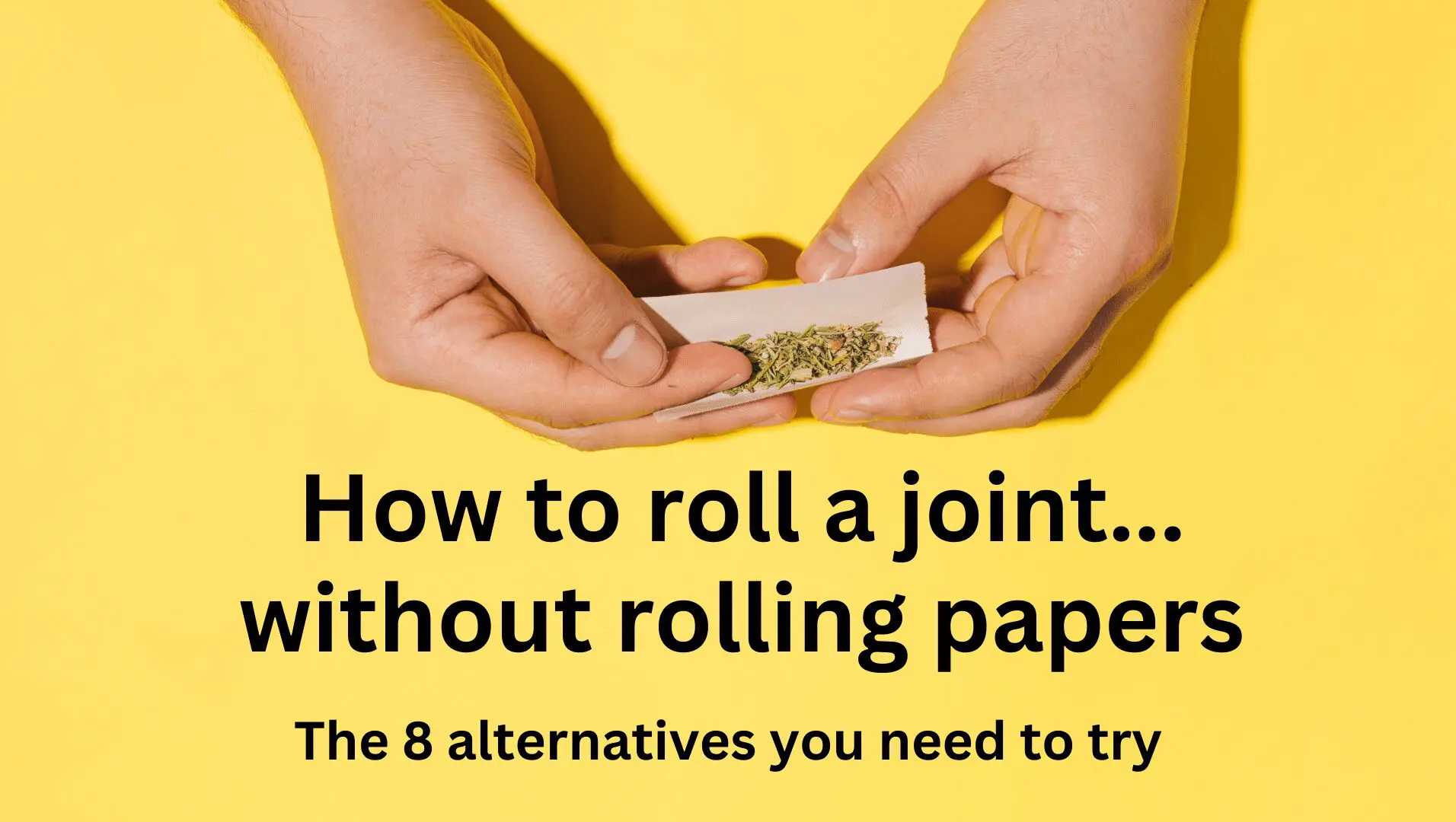
Smoking is a ritual enjoyed by many, and for those who prefer to roll their own cigarettes, rolling papers are an essential component. But what if you run out of rolling papers or don’t want to use them? Fortunately, there are many alternatives to rolling paper that are worth exploring. In this article, we’ll take a closer look at some of the best substitutes for rolling papers.
What are Rolling Papers?
Rolling papers are thin, lightweight sheets of paper used to roll tobacco, cannabis, or other herbs into cigarettes or joints.
They are available in a range of sizes, flavors, and materials, such as rice paper, hemp paper, and wood pulp. Rolling papers are popular among smokers who prefer to roll their own cigarettes, as they allow for greater customization and control over the smoking experience.
Apply For Your Medical Marijuana Card Online Today!
Obtain a Med Card in your State
SELECT YOUR STATE Alabama Alaska Arizona Arkansas California Colorado Connecticut Delaware Florida Georgia Hawaii Illinois Kentucky Louisiana Maine Maryland Massachusetts Michigan Minnesota Mississippi Missouri Montana Nevada New Hampshire New Jersey New Mexcio New York North Carolina North Dakota Ohio Oklahoma Oregon Pennsylvania South Carolina South Dakota Texas Utah Vermont Virginia Washington DC Washington State West Virginia
The 8 best substitutes for rolling papers, 1- corn husks.
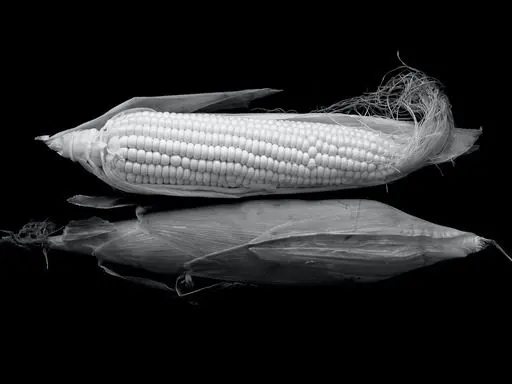
Corn husks are an excellent substitute for rolling papers, especially for those who prefer a natural, eco-friendly option.
To use corn husks, soak them in water for about 15 minutes to make them pliable. After that, remove the husks and let them dry out for a few hours.
Once dry, they can be cut into strips and used to roll cigarettes or joints. Corn husks provide a slightly sweet flavor that complements the taste of the herbs.
2- Bible or Dictionary Pages
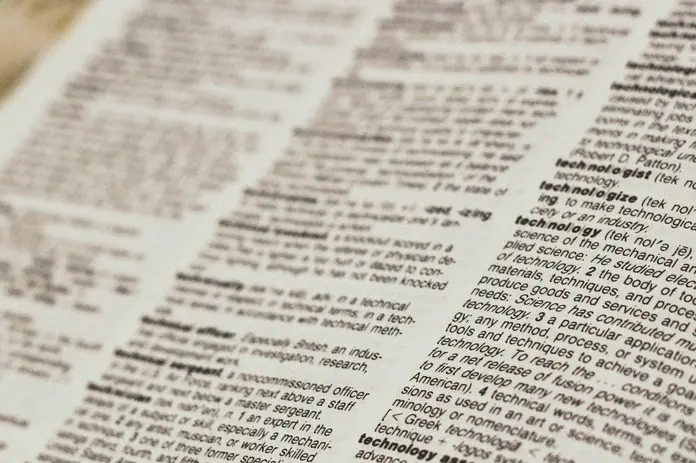
While it may seem sacrilegious to use pages from a Bible or dictionary, they make excellent substitutes for rolling papers.
The thin, lightweight pages are easy to roll and burn evenly, providing a smooth smoking experience. Just make sure to use a book that you don’t mind sacrificing for the sake of smoking.
3- Rice Paper
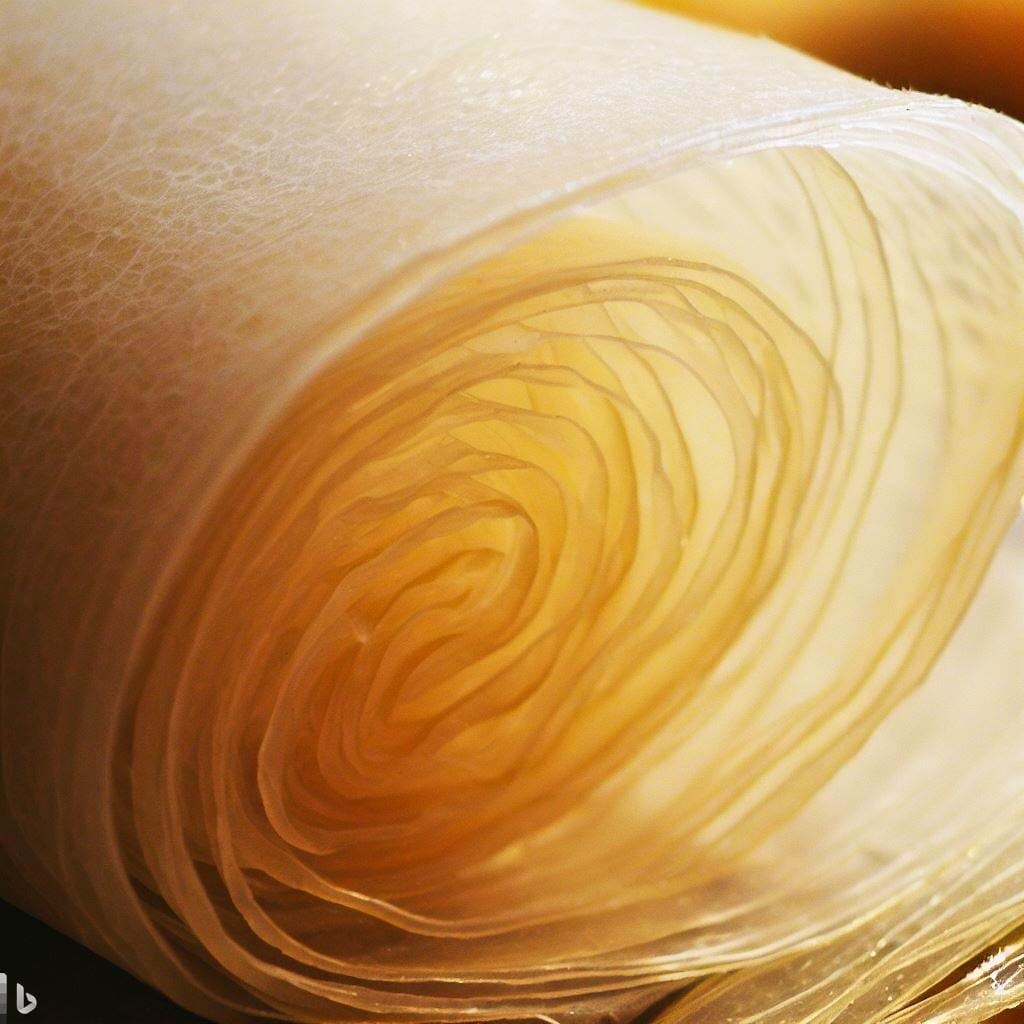
Rice paper is a popular alternative to rolling papers, particularly in Asian cultures. It is made from rice flour and water, which gives it a delicate, translucent texture.
Rice paper burns slowly and evenly, making it an excellent choice for those who prefer a slow-burning smoke. It is also tasteless, so it won’t affect the flavor of the herbs.
4- Hemp Paper
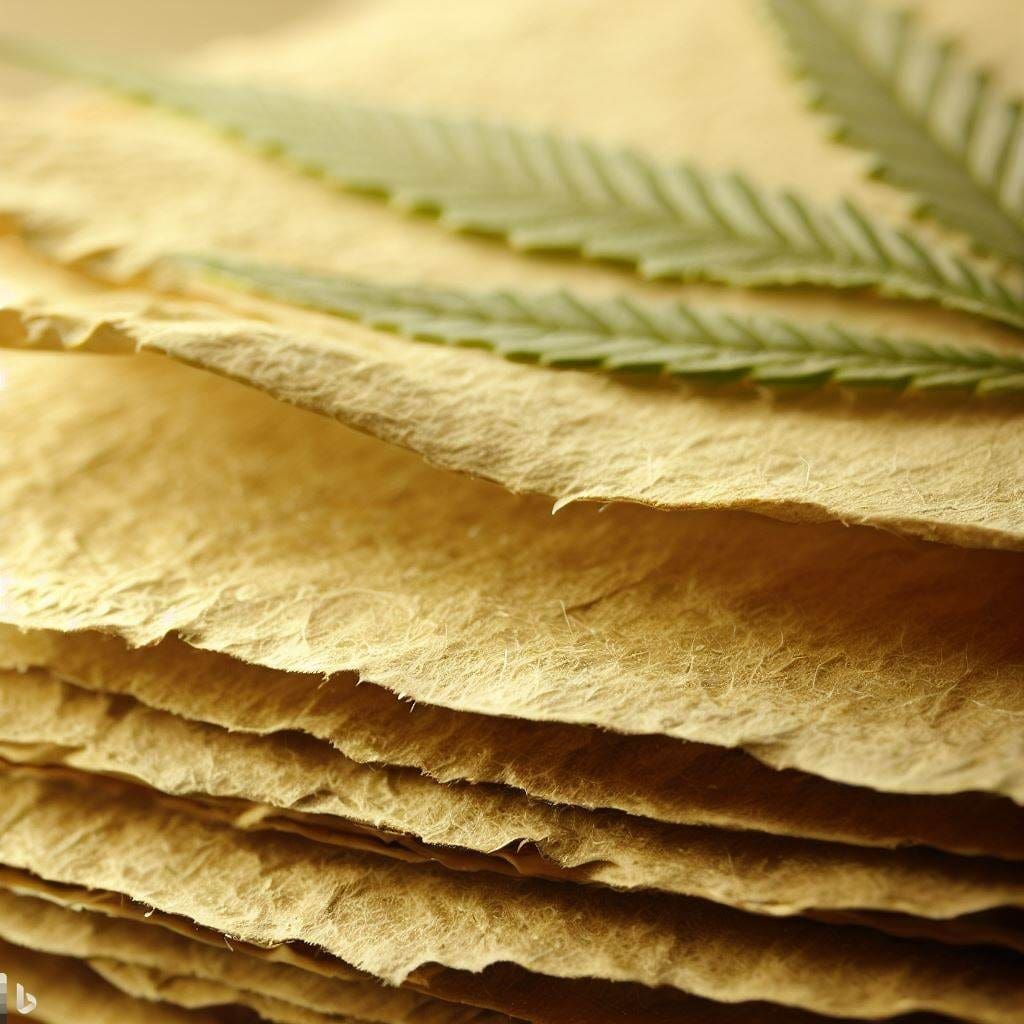
Hemp paper is an eco-friendly alternative to traditional rolling papers. It is made from the fibers of the hemp plant, which are sustainable and renewable.
Hemp paper is thin, lightweight, and burns evenly, providing a smooth smoking experience. It also has a slightly sweet flavor that complements the taste of the herbs.
5- Bamboo Paper
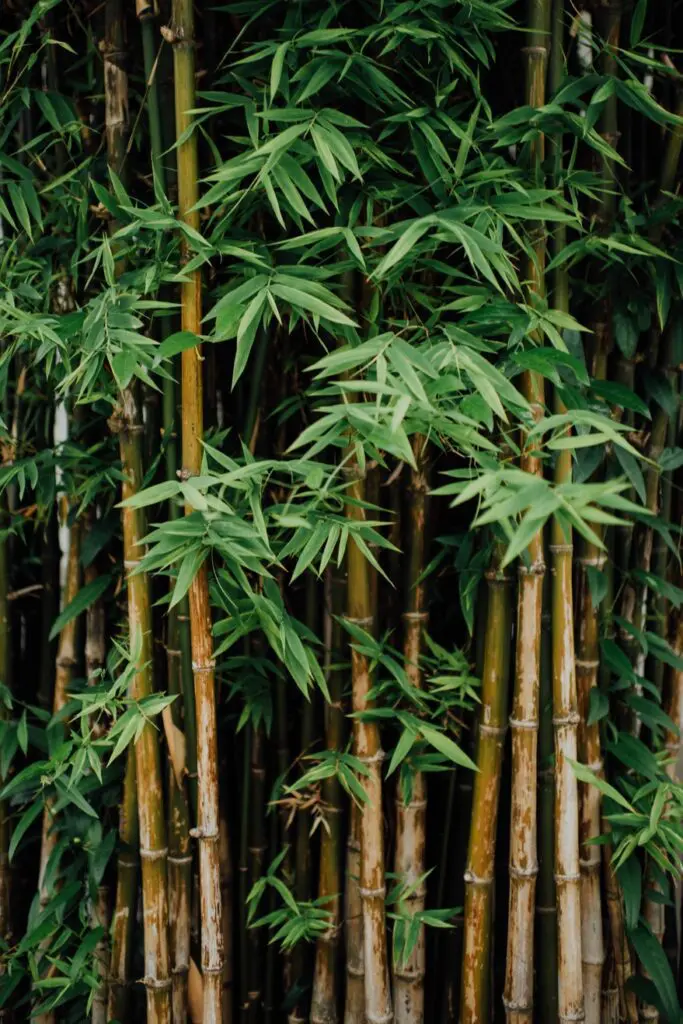
Bamboo paper is another eco-friendly alternative to rolling papers. It is made from the fibers of the bamboo plant, which are also sustainable and renewable. Bamboo paper is thin, lightweight, and burns evenly, providing a smooth smoking experience. It also has a slightly earthy flavor that complements the taste of the herbs.
6- Tissue Paper

Tissue paper is a readily available alternative to rolling papers.
While it is not as durable as other options, it can still be used to roll cigarettes or joints in a pinch.
Tissue paper burns quickly and unevenly, so it is important to use caution when smoking with it.
7- Gum Wrapper
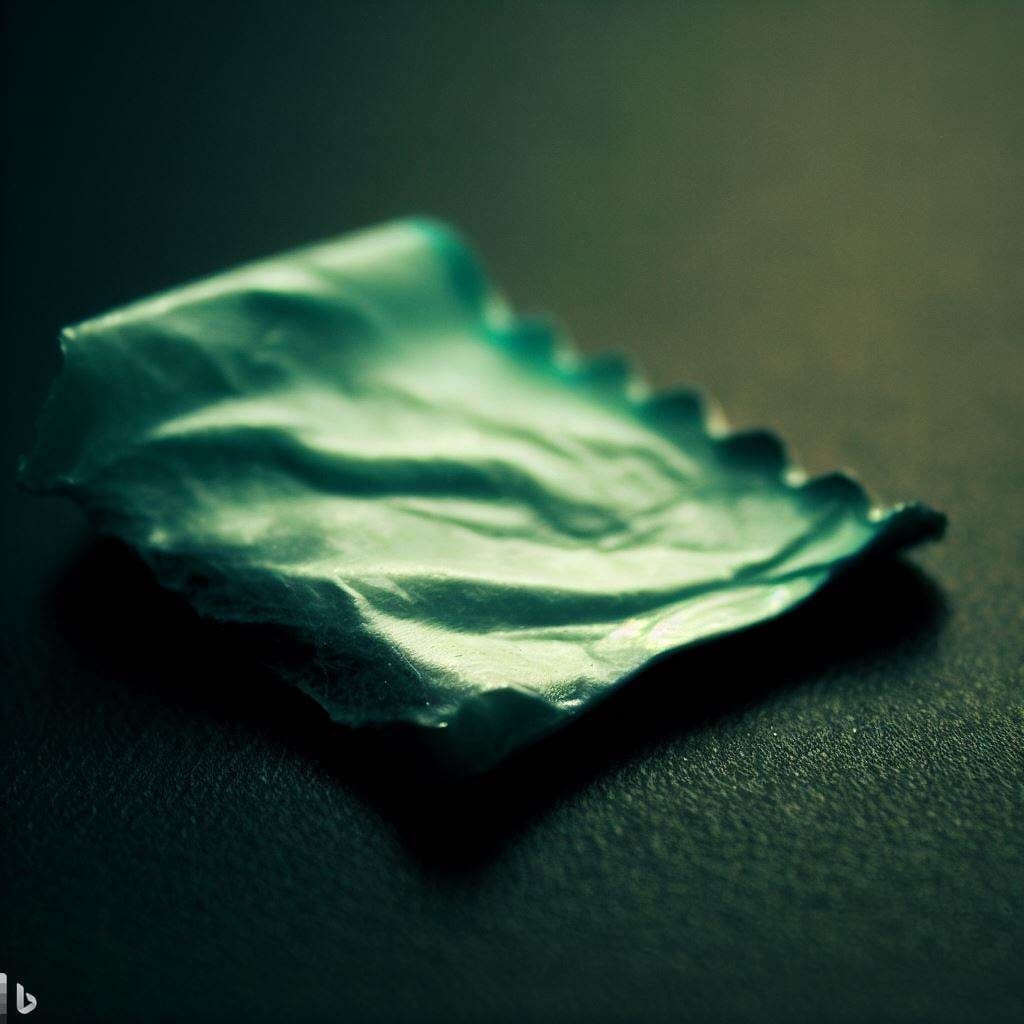
Gum wrappers are another unexpected substitute for rolling papers.
The thin, shiny paper can be used to roll cigarettes or joints, and it burns evenly. Just make sure to remove any gum from the wrapper before using it.
8- Parchment Paper

Parchment paper is a versatile option that can be used for cooking, baking, and even smoking.
It is heat-resistant and non-stick, making it an excellent choice for those who prefer a cleaner smoking experience.
Parchment paper burns evenly and provides a neutral flavor, so it won’t affect the taste of the herbs.
Other Alternatives to Smoking Blunts and Joints
While rolling papers are the most popular way to smoke cannabis and tobacco, there are many other alternatives to consider. Here are a few options:
Bongs are water pipe s used for smoking cannabis and tobacco. They work by filtering smoke through water, which cools and smooths the smoke before it reaches your lungs. Bongs come in a variety of shapes and sizes and can be made from glass, acrylic, or ceramic.
Pipes are small, handheld devices used for smoking cannabis and tobacco. They consist of a bowl, where the herbs are placed, and a stem, which is used to inhale the smoke. Pipes can be made from a variety of materials, including glass, wood, metal, and stone.
Vaporizers are electronic devices used for smoking cannabis and tobacco. They work by heating the herbs to a temperature that releases the active compounds without burning the material. Vaporizers come in a range of styles
Repurposing other Smoke Devices
In addition to using alternatives to rolling papers , smokers can also repurpose other smoking devices to suit their needs. For example:
- Hookahs – Hookahs are a type of water pipe that are often used to smoke flavored tobacco. However, they can also be used to smoke cannabis or other herbs by replacing the tobacco bowl with a different type of bowl. Hookahs can be expensive and require regular maintenance, but they provide a smooth smoking experience and are often used for social smoking.
- Dab Rigs – Dab rigs are specialized pipes that are used to smoke concentrated cannabis extracts, also known as dabs. However, they can also be used to smoke dry herbs by using a different type of bowl. Dab rigs can be expensive and require some knowledge of how to use them, but they can provide a strong and flavorful smoking experience.
- One-Hitters – One-hitters are small, discreet pipes that are designed to hold a single hit of cannabis or tobacco. They are often used as a way to smoke in public without drawing attention to oneself. While they may not be as enjoyable as other smoking methods, they are easy to use and affordable.
- DIY Devices – Some smokers prefer to make their own smoking devices out of household items such as apples, cans, or plastic bottles. While these DIY devices can be creative and fun, they may not be safe or effective for regular use.
What can I roll with when I don’t have paper?
When you don’t have rolling paper, there are s everal alternatives you can use such as corn husks, Bible or dictionary pages, rice paper, hemp paper, bamboo paper, tissue paper, gum wrappers, and parchment paper.
What is the easiest paper to roll?
The easiest paper to roll with will depend on personal preference and skill level. Some people find that hemp or rice papers are easy to work with, while others prefer thicker papers like gum wrappers.
How do you roll a blunt without papers?
To roll a blunt without papers, you can use a variety of alternative materials such as corn husks, tobacco leaves, or even a hollowed-out cigar. Simply fill the material with your desired herb and roll it tightly, then seal it with a bit of saliva or honey.
How to make rolling paper?
While it’s possible to make your own rolling paper from scratch, it can be a time-consuming process. Some people prefer to make paper out of natural materials like rice or hemp, while others use a combination of wood pulp and cotton fibers. The process typically involves grinding the materials into a pulp, spreading it out on a screen or mesh, and drying it out before cutting it into sheets.
Like This Post?
Share with your friends
Recent Posts

Everything 420: Separating Facts from Fiction
If you’re a marijuana enthusiast or even just a casual smoker, you’ve likely heard of…


420 Events South Dakota 2024
Hey there, cannabis enthusiasts! Before you dive into our curated list of 420 events nearest…

420 Events Michigan 2024

PLEASE VERIFY THAT YOU ARE OF LEGAL AGE TO ENTER. You must be 21 years of age or older to purchase product on this site in the United States. Products on this site are not intended for use with nicotine, e-juice, or e-liquids.
FREE SHIPPING ON ORDERS OVER $99
- Shop Dry Herb
- Best Seller Collection
- What is a one hitter?
- Differences between Sativa vs Indica
/// PEN STYLE POWER
- Expedition Series
- Craftsman Series
- Core Series
- Vista Edge Series
/// ACCESSORIES
- Base Charger
- Hideaway Sleeve
/// COMPACT POWER
- Compass Series
- Ridge Charger
- Build Your Kit
- Compare Models

- About Vessel
- Become a Retailer
- JustBrands Collaboration
- Store Locator
- Good Reads Blog
- GRN Recycle Program
- Job Opportunities
- Military Discounts
- Contact Vessel

Become a Vessel ambassador.

Become a Vessel retailer.
/// ONE HITTER
- Air (3-Pack)
/// LIGHTERS
- High-Performance Butane
/// DRY HERB KITS
- Build Your Eclipse Kit
- Build Your Spark Bundle
/// ASHTRAYS
/// STORAGE + GRINDERS
- Mill Grinder
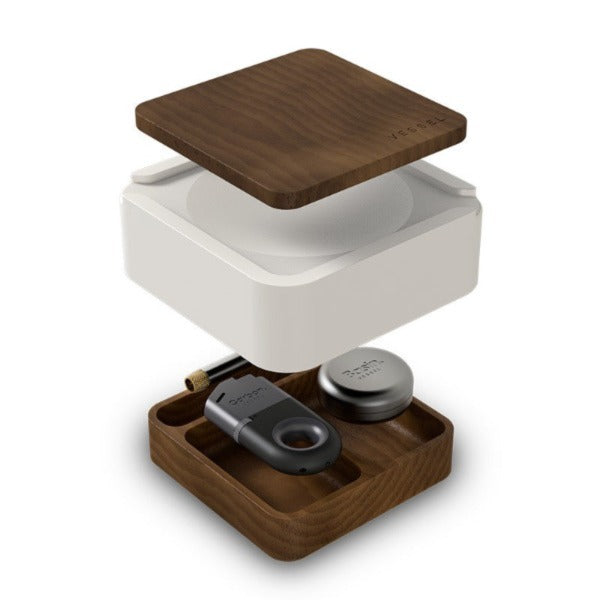
Back in Stock
What to Use as Rolling Paper - Alternatives That Might Surprise You
- by Nayomi Neelangal
- December 09, 2023
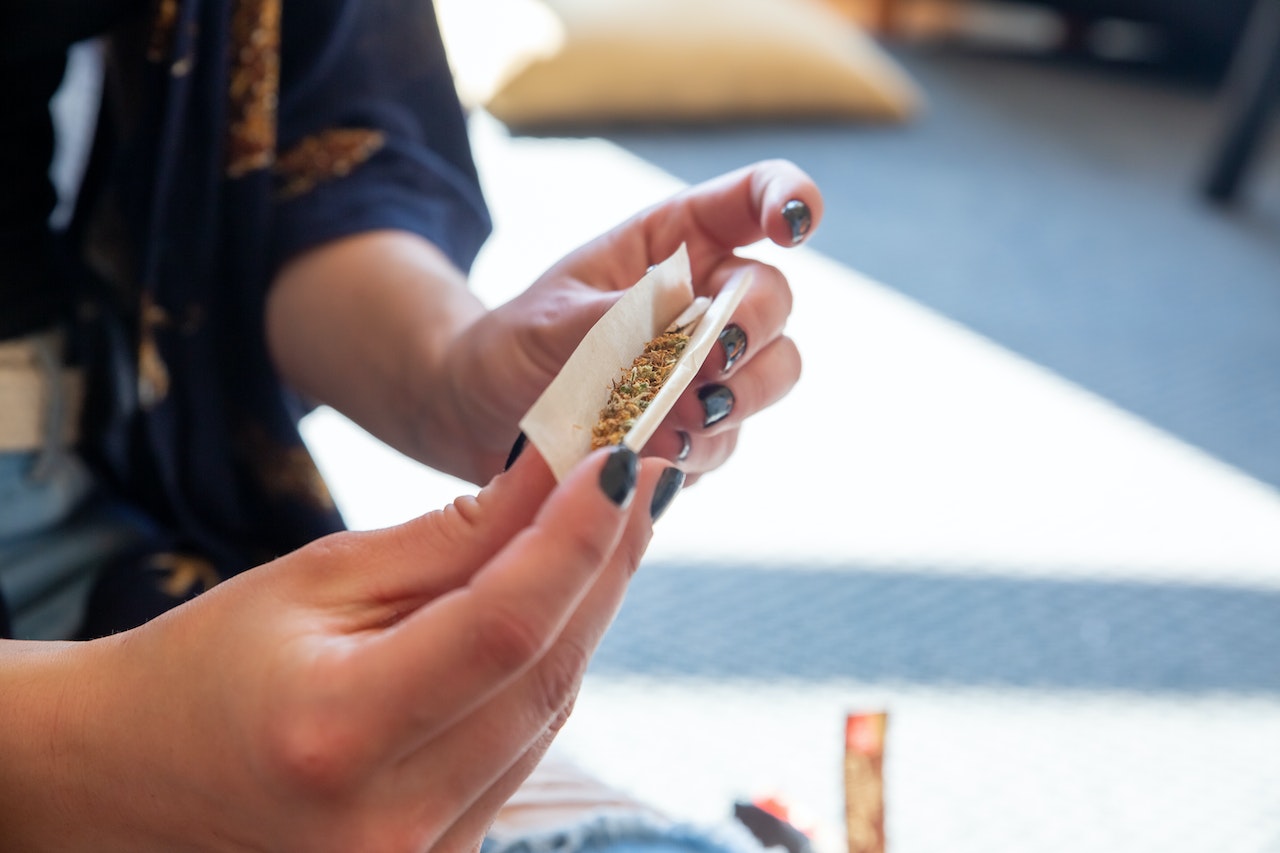
In a pinch, knowing what to use as rolling paper alternatives when you’ve run out is extremely useful.
You’ve probably been there yourself: you used your last rolling paper this morning. A trip to the corner store feels like so much effort, but you’re craving a quick spliff. You search your space desperately for anything that could possibly be used as a smoking device.
Luckily, some ordinary household items can be used to roll up. Read on to discover some alternatives to rolling papers that may surprise you.
Rolling paper alternatives
When searching for that perfect rolling paper substitute, stay creative but cautious. While many household items can be used in place of a rolling paper, some alternatives are safer than others.
Tissue Paper
Plain tissue paper is the closest alternative to rolling papers. With a thin (but not too thin) consistency, tissue paper best mirrors the flexibility of cigarette papers. It catches easily but is sturdy enough for a decently long-lasting burn.
Though tissue paper is easier to roll with, normal paper can be used in desperation--but only if it’s ink free.
While stoner’s lore claims that Bible pages are the perfect rolling consistency, inhaling the ink on pages of any book can be hazardous. With that being said, if you must enhance your smoke session with the wisdom of Matthew, Mark, Luke and John, make sure you’re using a page with little to no ink. The same goes for newspapers and receipts.
Reusable pipes and cones

Buy a weed pipe from Vessel
If you frequently find yourself looking for rolling paper in a pinch, you might want to consider a reusable pipe or cone for cannabis. It's a one-time purchase that you can throw in your purse or pocket and use on the go. A few options to consider is a reusable dry herb vape , a dry herb cone (which is similar to a joint), or a reusable weed pipe .

Buy a cone from Vessel
Pages from a book
Aside from tissue paper, you could always repurpose that old book on your shelf that you’ve never (or will ever, probably) read before. Usually, books come with blank papers at the beginning and end called “flyleaves.” These flyleaves are great for rolling since they don’t have any ink, making them safe for the lungs.
But before tearing out pages willy-nilly, make sure you choose paper that feels organic and isn’t glossy. Glossy paper is chemically treated, which may release chemical fumes that aren’t good for your lungs.
Paper gum wrapper
If you’re out of rolling papers but have a pack of gum lying around, you’re in luck. Gum wrappers can also be used as an alternative to rolling papers.
If you’re smoking heavily, try using saliva to stick together multiple gum wrappers. This will make for a wider surface--and a fatter roll.
Additionally, when using this method, be sure that the gum wrapper you choose has no aluminum coating. Though bowls made from aluminum foil are a longtime favorite among desperate smokers, smoking out of aluminum can be extremely dangerous.
Heating aluminum is likely to cause burns, and burnt aluminum also produces toxic fumes that should never be inhaled. Plus, rolling up with aluminum foil makes for an icky tasting blunt. As such, it is essential that you stick with paper gum wrappers when using this alternative.
Using a corn husk as a rolling paper is not only a natural, tobacco-free alternative. It also makes for a pretty pleasurable smoking experience.
Corn husks burn slowly and have a reputation for producing smooth hits. For optimum rolling potential, dampen your corn husk and let it sit for a few minutes. The slightly wet husk will stick together easily for a simple roll-up.
Flower petals
Take a note from King Palm’s handbook, and wrap your dry herb in something from nature. While you may not have access to a palm leaf, rose petals are a natural and safe way to roll up your cannabis--and they’re far more easily accessible. Smoking with rose petals might promote stronger relaxation, though the rolling process is a little advanced.
To roll yourself a rose blunt , start with dried rose petals. Line up a row of these rose petals on your rolling tray, and pack your rose blunt as you normally would. Just like you would roll an average blunt, tuck the bottom edges of the rose petal underneath the top edge, using saliva to seal as you roll. Unlike with a normal blunt wrap, however, you must also seal your dried roses to one another. The key to rolling a rose petal blunt is patience.
Pro tip: To prime your petals for rolling, toast them in the oven on 250 degrees for a few minutes until dry.
Empty cigarette
When in a rolling paper drought, bum a cigarette from one of your friends. Gently massage the cigarette to loosen the tobacco inside. Dump out the loose tobacco, leaving an empty, already rolled cone.
You can then pack in your ground dry herb of choice and smoke as you would a normal cigarette.

Buy a one hitter from Vessel
Coffee filter
As an absolute last resort, a coffee filter can be used as an alternative to a rolling paper. Though it may mimic the standard rolling paper in consistency, coffee filters are often thinner and, therefore, much more flammable. As such, they burn extremely fast when used to roll dry herb. They’re also more liable to catch fire in unwanted places: when you smoke using a coffee filter, you risk losing your joint to a quick-burning flame.
Glass pipes and bongs

Buy glass one hitters from Vessel
When you find yourself paperless and literally have nothing else on the list, maybe it’s time to whip out your glass pipes and bongs. With these, you can enjoy your herbal blends without the need for any paper. Not only do they provide a smooth and often cooler smoking experience, but they also allow for a different kind of session altogether. A tip for beginners: always keep your glass clean for the best taste and experience.
Alternatives To Avoid
As you probably know by now, you can get really creative with what you can use as rolling papers. However, not everything that rolls is gold! Here are a few alternatives that you might come across but should steer clear of:
- Receipts: Although they feel like paper, most modern receipts are coated with BPA or other chemicals that may produce toxic fumes when burned.
- Plastic bags: This may be obvious already, but you’d be surprised. Some might think it's a makeshift solution, but burning plastic releases toxic fumes that can be harmful when inhaled. Not to mention, it's an environmental disaster.
- Magazine pages: Colorful and glossy might look cool, but magazine pages are treated with various chemicals and inks. When burned, these can produce carcinogens and other hazardous compounds.
To sum it up
If you’ve run out of rolling papers, don’t panic. Many household items can be used as an alternative to rolling papers. Whether it's a rose petal, a corn husk, or just an empty cigarette, you can still roll a decent joint if you get creative, use your imagination, and, above all else, stay safe. When in doubt, do your research, and don’t smoke anything that might contain dangerous chemical additives.
What kind of paper is best to roll with?
A lot of cannabis enthusiasts swear by unbleached hemp paper. They're natural, devoid of chlorine and other chemicals, and offer a smooth burn. Hemp papers are also thin and have the right amount of stickiness, ensuring your roll is tight and even.
What are the healthiest joint papers?
For health-conscious tokers, organic hemp papers or rice papers stand out. Both options are thin, free from artificial chemicals and bleaches, and burn evenly. Organic hemp papers, in particular, come from sustainably sourced hemp, making them a top choice for both your health and the environment.
Can you use a coffee filter as a rolling paper substitute?
While coffee filters may appear similar to rolling papers, they’re a subpar alternative at best. They burn extremely quickly, and, as a result, you risk an engulfed joint with every hit.
What paper can I use to roll marijuana cigarettes?
Standard tissue paper is the closest substitute to your average rolling paper. With a similar consistency to rolling papers, plain tissue paper mirrors many of the same qualities, making for a comparable smoking experience. Additionally, if you have corn husks available, these natural encasings are another smooth and slow-burning alternative to regular blunt wraps.
Can you use aluminum foil as rolling paper?
While aluminum foil may seem like an easy option to roll up with, it produces fumes that are dangerous to inhale. Instead of aluminum foil, look around for a piece of tissue paper, a gum wrapper, or a corn husk to roll up with.
Can you smoke parchment paper?
Parchment paper should not be smoked. While rolling up with this kitchen essential may seem tempting, this paper is treated with various chemicals that are unsafe to inhale.
Leave a comment (all fields required)
Related blog posts.

How to Build Your Own Grow Room in the Garage or Shed?

What is a Dry Herb Vaporizer for Weed?

How to Make DIY Weed Gummies At Home

The Complete Guide to Using the Paper Towel Method for Cannabis Seed Germination
Starting a cannabis garden can be an exciting and rewarding experience, but it all begins with the germination process. There are several methods to choose from, but the paper towel method stands out as a popular and reliable option. If you’re new to cannabis growing, you might be pondering over what the paper towel method involves, or how it works. In this comprehensive guide, we’ll go over the step-by-step process of the paper towel method, its benefits, and troubleshooting tips to ensure success. So let’s delve in and learn more!
What is the Paper Towel Method?

Why Use the Paper Towel Method?
There are various methods for germinating cannabis seeds, but the paper towel method is a popular and effective technique. Here are some reasons why you might want to consider using this method:
- Higher Germination Rates: One of the biggest advantages of the paper towel method is that it can result in higher germination rates compared to other methods. This is because it provides the ideal conditions for the seeds to sprout, including adequate moisture and oxygen.
- Cost-Effective: Germinating seeds using the paper towel method is also cost-effective, as you don’t need any special equipment or tools. All you need are some paper towels, water, and a warm, dark place to let the seeds germinate.
- Easy to Monitor: With the paper towel method, you can easily monitor the progress of the germination process. You can check on the seeds regularly to make sure the paper towels are still moist and to see if any of the seeds have started to sprout. This makes it easier to catch any issues early on and take corrective action.
- Good for Beginner Growers: For beginner growers, the paper towel method is a good option because it is easy to do and doesn’t require a lot of skill or expertise. It is also a good way to learn more about the different stages of the germination process, which is an important part of growing healthy cannabis plants.
By choosing to use the paper towel method to germinate your cannabis seeds, you can increase your chances of success while also saving money and gaining valuable experience as a grower.
Benefits of the Paper Towel Method
Using the Paper Towel Method for germinating cannabis seeds has many benefits over other germination methods like planting directly in soil. Here are some of the benefits of this method in detail:
By using the Paper Towel Method, a cannabis grower can improve the germination success rate and have greater control over the germination process. This can lead to a higher yield of healthy plants, which can be beneficial for both personal and commercial cannabis growers.
How Does the Paper Towel Method Work?
The paper towel method works by creating a warm and moist environment that encourages seeds to germinate. The method involves placing cannabis seeds in between moist paper towels, which are then kept in a warm and dark place. Over the next few days, the seeds should sprout and develop a small root, indicating that they are ready for planting in soil.
During the germination process, the moisture from the paper towel encourages the seed shell to crack open and allows the root to emerge. The warmth helps to speed up this process, as cannabis seeds require a warm environment to germinate successfully.
Using the paper towel method for germination has many benefits. For example, it is a simple and cost-effective way to germinate seeds without requiring a lot of equipment. It also allows you to monitor the germination process closely and identify any potential issues early on.
However, it is important to note that the paper towel method does have some limitations. For example, seeds that do not germinate may be more difficult to rescue, and seedlings may be more susceptible to damage during the transplanting process. Additionally, seedlings grown using the paper towel method may be more at risk of fungal growth, which can be a common issue when working with moist environments.
Despite these limitations, many growers continue to use the paper towel method for germinating their cannabis seeds due to its simplicity and effectiveness. By following the step-by-step guide outlined below, you can use the paper towel method to germinate your cannabis seeds with confidence.
Step-by-Step Guide to Using the Paper Towel Method
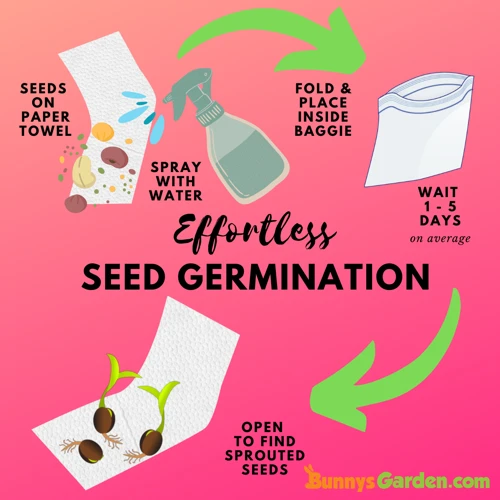
Step 1: Choose Your Seeds
Choosing the right seeds is the first step to successfully germinating your cannabis seeds using the paper towel method. Before selecting your seeds, it is essential to understand the different types of seeds available and which ones are best suited for the paper towel method.
There are two main types of cannabis seeds: regular seeds and feminized seeds. Regular seeds have a 50/50 chance of producing male or female plants, while feminized seeds will only produce female plants.
When choosing your seeds, it is important to purchase them from a reputable seed bank or breeder. Look for reviews and recommendations from other growers to ensure that you are purchasing high-quality seeds.
In addition to choosing the right type of seed, consider the strain that you want to grow. Some strains are easier to grow than others, and certain strains may have specific requirements for germination.
Here are some tips to help you choose the right seeds for the paper towel method:
- Choose feminized seeds for guaranteed female plants
- Look for seeds from a reputable seed bank or breeder
- Consider the strain and its specific requirements for germination
- Choose seeds that are healthy and undamaged
- Consider the desired yield, THC and CBD levels, and flavor profile of the strain
By taking the time to carefully choose the right seeds, you can increase the chances of successful germination and ultimately, a healthy and bountiful crop.
Step 2: Gather Your Materials
To effectively use the paper towel method for germinating cannabis seeds, you will need to gather the necessary materials. Having all the materials on hand will ensure that the process goes smoothly and efficiently. Here are the essential materials you will need to gather:
By gathering all these necessary materials, you can move on to the next step of the paper towel method, which involves preparing the paper towels for germination. Remember that using quality materials and following the steps carefully will increase your chances of success in germinating healthy cannabis seedlings.
Step 3: Prepare the Paper Towels
Preparing the paper towels for cannabis seed germination is a crucial step in the process. Here is a step-by-step guide on how to prepare the paper towels correctly:
- Choose the right paper towels: Not all paper towels are created equal when it comes to cannabis seed germination. Choose a brand that is not too thin or too thick. Thicker paper towels may not allow enough oxygen flow while thinner ones may not hold enough moisture.
- Wet the paper towels: Wet the paper towels with warm water. Squeeze out the excess water so that the towels are damp but not dripping.
- Arrange the paper towels: Lay one damp paper towel on a clean surface. Then, place the cannabis seeds in a row, leaving about an inch of space in between each seed. Cover the seeds with another damp paper towel.
- Seal the paper towels: To keep the paper towels moist, use a plastic bag to seal them. Fold the paper towels once or twice so that they fit inside the bag. Close the bag and make sure it is sealed tightly.
- Label and date the bag: It is essential to label the bag with the strain or type of seed and the date of germination. This information will help you keep track of the germination process and identify any issues that may arise.
- Place the bag in a warm, dark location: Place the sealed bag in a warm and dark location such as a closet or cupboard. It is important that the temperature remains consistent at around 70-80 degrees Fahrenheit (21-27 degrees Celsius).
By following these steps, you can significantly increase the chances of successful cannabis seed germination using the paper towel method. Remember to check the paper towels regularly to ensure they stay moist and to monitor the progress of the germination process.
Step 4: Germinate Your Seeds
After preparing your paper towels, it’s time to germinate your seeds . Follow the steps below:
It’s important to check on your seeds daily to make sure the paper towel remains moist. If needed, you can add a few drops of water to it to keep it from drying out. Once you see the taproot emerge from the seed, it’s time to move on to the next step.
Step 5: Transfer Germinated Seeds to Soil
After you have successfully germinated your cannabis seeds using the paper towel method, it’s time to transfer them to soil. This step is crucial in ensuring that your seedlings grow into healthy plants. Here is a step-by-step guide on how to transfer your germinated seeds to soil:
Following these steps will give your germinated seeds the best chance of growing into healthy cannabis plants. Remember to be patient and continue to provide proper care for your seedlings as they grow.
Step 6: Care for Seedlings
Once your cannabis seeds have successfully germinated using the paper towel method, it’s time to start caring for the seedlings. Here are the key steps you need to take in order to ensure they grow into healthy plants:
1. Transplant the Seedlings: After the seeds have germinated and the taproot appears, it’s time to transplant them into a grow medium. Using a small container filled with moistened soil or coco coir, gently place the seedling in the middle and cover it with a thin layer of soil. Be sure not to bury it too deeply as this can cause problems with the plant’s growth. Place the containers in a warm, sunny spot and keep the soil moist but not too wet.
2. Provide Adequate Light: As soon as the seedlings have sprouted, they will need plenty of light. If you don’t have access to natural sunlight, you can use artificial grow lights instead. Keep the lights on for 18-20 hours per day, and place them close to the seedlings to encourage strong growth.
3. Maintain Proper Temperature and Humidity: Cannabis seedlings need a warm, humid environment to thrive. Keep the temperature between 70-78°F (21-25°C) during the day and a few degrees cooler at night. Keep the humidity level between 60-70% to prevent the soil from drying out and to promote healthy growth.
4. Water and Feed Regularly: As your plants grow, they will need regular watering and feeding. Water them when the soil feels dry to the touch, but be careful not to overwater as this can lead to root rot. Use a high-quality cannabis fertilizer to provide your plants with the nutrients they need to grow strong and healthy.
5. Prune as Needed: As your plants grow, you may need to prune them to remove any dead or damaged leaves. This will help to promote healthy growth and prevent disease and pests from taking hold.
6. Keep an Eye out for Pests and Disease: Cannabis plants are susceptible to a wide range of pests and diseases, so it’s important to keep a close eye on your plants and take action at the first sign of trouble. Use organic pesticides and fungicides to treat any problems you encounter, and take steps to prevent them from coming back in the future.
By following these steps, you can ensure that your cannabis seedlings grow into healthy, thriving plants that will provide you with a bountiful harvest.
Troubleshooting Common Paper Towel Method Issues
While the paper towel method for germinating cannabis seeds is a relatively straightforward process, there are some issues that may arise. These issues can include fungal growth, seeds that don’t germinate, and seedlings that don’t grow. It’s important to know how to troubleshoot these problems so that you can ensure the success of your cannabis plants. Let’s explore some common issues and how to overcome them.
Fungal Growth
Fungal growth can be a common issue when using the paper towel method for cannabis seed germination. If you notice any fungal growth, it’s important to take action quickly to prevent it from spreading and potentially damaging your seeds. Here are some steps you can take to address fungal growth:
- Keep the towel moist, not wet: One of the main causes of fungal growth is excessive moisture. Make sure to keep the paper towel moist, but not soaking wet. If you notice any excess water in the container or on the towel, gently dab it up with a clean, dry paper towel.
- Provide ventilation: Fungi thrive in warm, damp environments with poor ventilation. Make sure to provide some air flow around your germinating seeds by gently cracking the lid of the container or placing it in a room with a fan or open window.
- Use a fungicide: If you notice significant fungal growth, you may want to consider using a fungicide. There are many products available that are safe for use on cannabis plants, but be sure to read the label carefully and follow all instructions for use.
- Remove affected seeds: If any of your seeds have been affected by fungal growth, it’s important to remove them promptly to prevent the fungus from spreading to other seeds. Discard any affected seeds and replace them with fresh ones.
By taking these steps, you can help prevent and address fungal growth when using the paper towel method for cannabis seed germination. Remember to monitor your seeds closely and take action as needed to ensure successful germination and healthy seedlings.
Seeds That Don’t Germinate
When using the paper towel method for germinating cannabis seeds, it is possible that some seeds may not germinate. There are several reasons why this may happen, and it can be frustrating for growers who want to ensure a high success rate for their germination efforts. Here are some common reasons why seeds may not germinate and what can be done to address them:
By addressing these common issues, growers can increase their chances of success with the paper towel method for germinating cannabis seeds. If some seeds still fail to germinate after troubleshooting these possible causes, it may be time to try a different germination method or purchase new seeds from a reliable source.
Seedlings That Don’t Grow
If you find that your seedlings are not growing after transferring them to soil, there could be a few reasons why. Here are some possible explanations:
- Poor soil quality: If your soil is not nutrient-rich or has a poor structure, it may not be able to support seed growth. Consider amending your soil or using a higher quality soil mix.
- Overwatering: Seedlings need the right amount of water to grow, and if they get too much, their roots can become waterlogged and lead to stunted growth or root rot. Make sure to let the soil dry out slightly before watering again.
- Underwatering: On the other hand, if you’re not giving your seedlings enough water, they can become dehydrated and their growth will suffer. Make sure to water the soil thoroughly, but not to the point of saturation.
- Insufficient light: Seedlings need plenty of light to grow, and if they don’t get enough, they can become leggy or weak. Make sure they are getting at least 14-16 hours of light per day, and consider using grow lights if natural sunlight is not enough.
- Temperature: If the temperature is too cold or too hot, your seedlings may not grow properly. Make sure to keep them in a warm, stable environment with temperatures between 20-25°C (68-77°F).
- Disease or pests: Diseases or pests can also lead to poor seedling growth. Watch out for any signs of disease or pests and take appropriate measures to treat the issue.
Remember, it’s important to address any issues with your seedlings as soon as possible to give them the best chance at thriving.
In conclusion, using the paper towel method for cannabis seed germination is an effective and convenient way to ensure your seeds have the best chance of sprouting. By following the step-by-step guide outlined above and taking proper care of your seedlings, you can successfully grow healthy plants from the comfort of your own home.
One of the main benefits of using the paper towel method is the ability to easily monitor the progress of your seeds. This method also eliminates the need to separately plant each seed, saving you time and effort. Additionally, by starting with healthy sprouts, you can avoid common issues that can occur when planting directly into soil.
It’s important to keep in mind that not all seeds will germinate using this method and some troubleshooting may be required. However, with proper care, you can successfully germinate and grow your seeds to a healthy plant.
Overall, the paper towel method is a simple and effective way to germinate cannabis seeds. By preparing properly and addressing issues as they arise, you can produce healthy cannabis plants from the comfort of your own home. So give it a try and see the results for yourself!
Frequently Asked Questions
Can i use any type of paper towel.
It’s best to use a plain, white paper towel without any added fragrances or lotions.
How long does it take for seeds to germinate using the Paper Towel Method?
Germination times vary, but typically it takes 1-5 days for seeds to germinate using this method.
What is the success rate of the Paper Towel Method?
The success rate of the Paper Towel Method depends on various factors, but generally it has a high success rate of 80-90%.
Do I need to keep the paper towel moist throughout the germination process?
Yes, it’s important to keep the paper towel moist throughout the germination process to ensure successful germination.
Can I use this method for any type of cannabis seeds?
Yes, the Paper Towel Method can be used for any type of cannabis seeds.
Do I need to keep the germinating seeds in the dark?
No, you can keep the germinating seeds in a well-lit area, but avoid placing them in direct sunlight.
Can I plant the germinating seeds directly into soil?
Yes, once the seeds have sprouted roots, you can plant them directly into soil.
What temperature should I keep the germinating seeds at?
The ideal temperature range is between 70-85°F (21-29°C) for successful germination.
Do I need to check the germinating seeds every day?
Yes, it’s recommended to check on the germinating seeds daily to ensure they remain moist and to monitor their progress.
What should I do if fungal growth appears on the paper towel?
If fungal growth appears on the paper towel, discard the affected seeds and start the germination process again with fresh seeds.
- Germinate Seeds With the Paper Towel Method
- Cannabis cultivation – Wikipedia

Identifying the Best Cannabis Seeds for Optimal Results

How to Germinate Cannabis Seeds Using the Soil Method
Leave a reply cancel reply.
Save my name, email, and website in this browser for the next time I comment.
Solve : * 16 × 11 =
- Terms of Use
- Privacy Policy
- Write for Us
420 Grow Radar
Are you over 21 years of age?

We've updated our Privacy Policy to make it clearer how we use your personal data.
We use cookies to provide you with a better experience, read our Cookie Policy
- Articles & Features
- Topics Cultivation Extraction & Processing Policy Psychedelics Science & Health Testing
- Resources Application Notes eBooks Infographics Listicles Podcasts Industry Releases Videos White Papers
How to Tissue Culture Cannabis

Want to listen to this article for FREE?
Complete the form below to unlock access to ALL audio articles.
Many cannabis producers are looking for ways to improve their yields and increase the quality of their product. One way to do this is through tissue culture. Tissue culture is a process by which living cells are grown in a controlled environment. Cannabis tissue culture involves micropropagation , where producers grow plants from tiny samples of viable tissue.
In this article, we explain more about tissue culture, the benefits of using it to grow cannabis, and key factors to consider before creating a cannabis tissue plant culture. If you’re interested in trying tissue culture yourself, we provide a step-by-step guide on how to get started.
What is tissue culture and what are the benefits?
Tissue culture is a plant propagation method involving tissues or cells being removed from a live or freshly harvested plant and grown in a sterile environment. This technique produces clones (genetically identical copies) of the original parent plant. It can be especially useful for strains that are difficult to propagate from seed or for growers who want to replicate a plant with desirable properties. Tissue culture can help preserve valuable genetics and can be used to create uniform plants that are less susceptible to disease.
Tissue culture allows cannabis growers to create new plants from existing ones without going through the process of nurturing cuttings. When producing clones from cuttings , the plants must be kept in a controlled, disease-free environment until they sprout roots. This can take up lots of space and increase production costs. Tissue culture yields similar results to using plant cuttings but takes up far less space and can lower expenses.
Key considerations in creating a cannabis plant tissue culture
Tissue culture involves growing samples in a micropropagation media that includes the exact nutrients that the plant needs. The ideal composition of the media is one of the major considerations in cannabis tissue culture and will depend on features of the plant starting material.
“When approaching tissue culture, the first consideration we make as scientists is the age and condition of the starting material and if it is a healthy or unhealthy donor plant,” David Critzer, cannabis tissue culture expert and instructor of Plant Cell Technology’s Tissue Culture Master Class: Cannabis , tells Analytical Cannabis .
“If the starting material is generally healthy and free from internal pathogens and we want to make genetic copies of the source plant, or even if we wanted to remediate surface pathogens like molds or bugs, we would use micropropagation to make additional plantlets.”
For unhealthy material, things are a little more complex, and an additional step is needed to produce non-contaminated tissue.
“If the source plant had internal pathogens such as viruses, viroids, or systemic fungi that are unable to be remediated with basic surface sterilization, we would consider amending antivirals, antimycotics, or antibiotics into the micropropagation media as a pretreatment to grow selected plantlets on,” says Critzer. He explains that the next step is a meristem isolation, where a microscope is used to isolate non-vascularized tissue that is free from contamination. This is then allowed to grow back into a full plant in a sterile environment.
You also need to consider the time required to create cannabis plant tissue culture. “Micropropagation (node culture) can be as fast as five-to-six weeks to rooted/acclimated plants after initiation,” says Critzer. “Meristem regenerations can range anywhere from 14 weeks up to a year to regenerate into a whole plant, depending on the size of the starting material.”
Equipment required for creating cannabis plant tissue culture
Once you’ve decided on your method, you’ll need to ensure you have all the required materials available. Media culture ingredients are of particular importance. These can vary depending on the starting material, but the Murashige & Skoog (MS) Basal Salts Mixture forms the basis of most plant tissue culture growth media. This is mixed with sugar and distilled water, and the pH should be adjusted to 5.8 .
While the liquid may be used as a growth media, adding agar will thicken the solution to a gel material ideal for use in petri dishes or other shallow vessels. You may also choose to add other ingredients such as plant hormones. For example, certain cytokinins can promote shoot formation, while select auxins can encourage rooting.
Common pieces of equipment used in cannabis tissue culture include a laminar flow hood, an autoclave, a stereo microscope, an orbital shaker, a milligram scale, a magnetic stirrer, and a pH meter.
Step-by-step micropropagation of cannabis tissue
As Critzer explains, the four main stages of micropropagation include:
Stage 1: Surface sterilization and aseptic initiation
Stage 2: shoot proliferation and multiplication.
- Stage 3: Rooting or preplant stage
Stage 4: Acclimatization and hardening
Let’s look at each of these in a bit more detail:
The first step in tissue culture is surface sterilization to prevent contaminants from infecting the plant tissue. You should also ensure any tools are sterilized, for example, using isopropyl alcohol or an autoclave.
Next, you can prepare your tissue culture media for the shoot multiplication and rooting stages. The media should be sterilized using an autoclave at around 121°C (249.8 Fahrenheit) and then cooled. Once prepared, it is poured into sterile containers; tubes or petri dishes are commonly used.
Now it’s time to collect your plant material. Samples can be taken from various parts of the plant, including buds and shoot tips. Depending on the sample type and whether or not it came from a sterile plant, it may need to be washed and sterilized . The tissue can then be placed in the shoot multiplication media.
Once samples are placed in the media, they need to be maintained under ideal conditions. This typically comprises a temperature of 25°C (77°F), 60% humidity, and fluorescent light. During this stage, shoots proliferate and roots start to form.
Stage 3: Rooting or pre-plant stage
The next stage in tissue culture is the rooting or pre-plant stage, where shoots are transferred into the rooting media and kept under ideal conditions. Once sufficient roots have formed (after about six weeks), the plantlet is ready to be transferred into soil.
The final stage in tissue culture is acclimatization and hardening. This is when the plant is slowly introduced to different environmental conditions. For example, the plant may be exposed to different amounts of light or varying temperatures. This process helps the plant adjust to its new environment and ensures it can thrive once it is transplanted into its final growing vessel.
Common challenges in cannabis tissue plant culture
Cannabis plant tissue culture can run very smoothly and you might be surprised at the speed with which you achieve desirable results. But it doesn’t come without its challenges.
“Vitrification, aka hyperhydricity, is an issue exclusive only to tissue culture plants and is the most common problem scientists must overcome when developing protocols,” says Critzer.
Hyperhydricity is a condition in which plants have excessive water in their tissue, leading to wilting, yellowing leaves, and stunted growth. It can often be caused by overwatering, poor drainage, compacted soil, or fungal or bacterial infection.
“After that, we are commonly seeing hops latent viroid, cannabis cryptic virus, lettuce chlorosis virus, and beet curly top virus in the cultivation space depending on where you are in the world,” advises Critzer. He adds that cultivation style factors into your susceptibility to different vectors of transmission.
Cannabis tissue culture offers a relatively fast and efficient method to produce large numbers of plant clones, helping you preserve valuable genetics. Certain techniques can also help you produce disease-free versions of contaminated plants.
While there are several potential challenges with cannabis tissue culture, if you take the time to ensure you provide the plant tissue with a sterile environment, the right nutrients, and proper care, you should be able to successfully produce healthy clones.

Aimee O'Driscoll
Freelance Science Writer
Aimee is a freelance science writer with over a decade of experience as a development chemist. She has written for Analytical Cannabis since 2020.
Like what you just read? You can find similar content on the topic tags shown below.

Stay connected with the latest news in cannabis extraction, science and testing
Get the latest news with the FREE weekly Analytical Cannabis newsletter

US States With Medical Cannabis Access See Decline in Nonmedical Opioid Prescriptions

Cannabis Consumers Have High Levels of Empathy

Quality Testing For Psilocybin


Collection: Gift Bag & Tissue Paper Sets
- In stock (28)
- Out of stock (0)
- Best selling
- Alphabetically, A-Z
- Alphabetically, Z-A
- Price, low to high
- Price, high to low
- Date, old to new
- Date, new to old
28 products
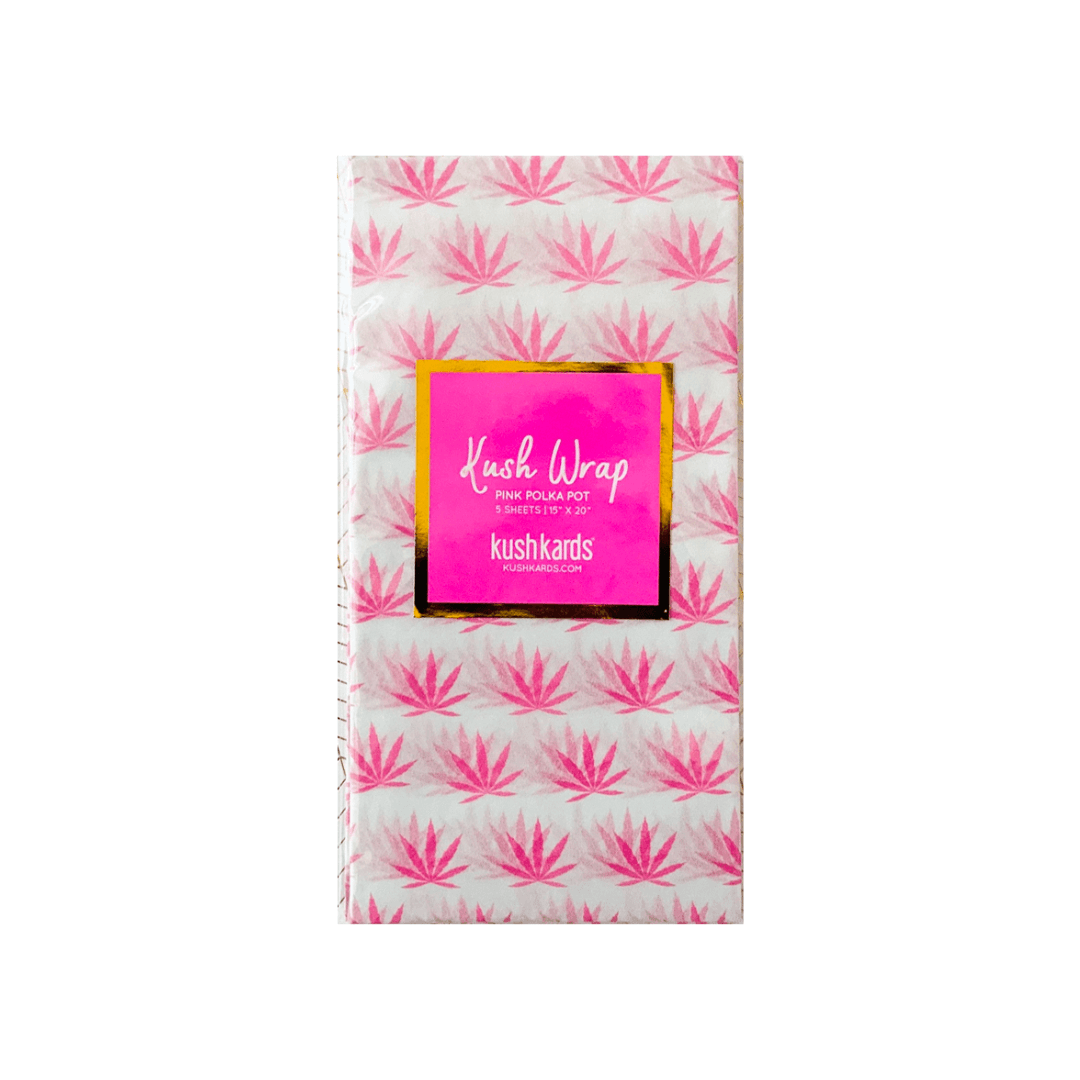
(1) 1 total reviews
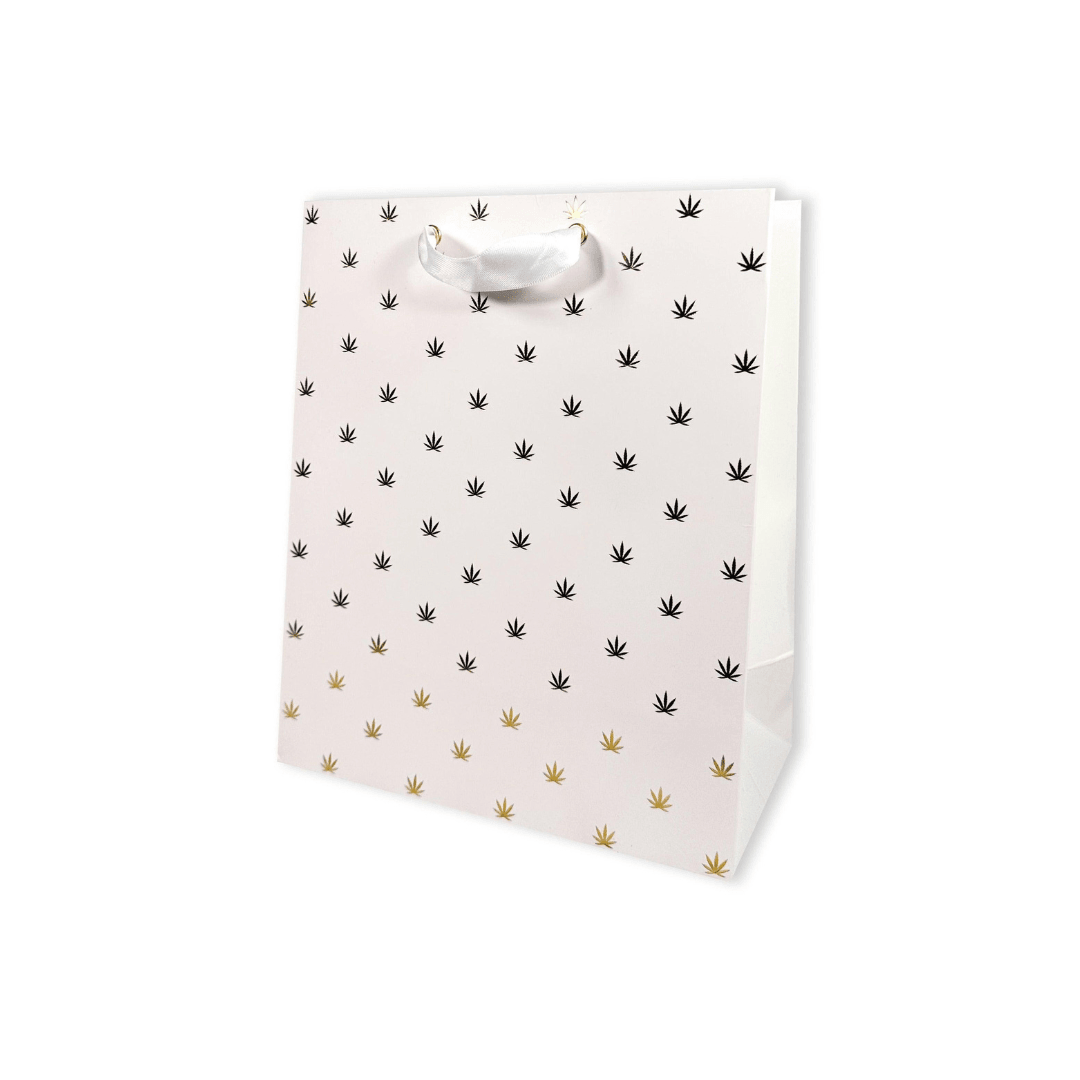
- Choosing a selection results in a full page refresh.

COMMENTS
Cut the tissue paper into squares sized 68 mm in length and 34 mm in width, which is the size of the standard rolling paper. Use your grinder to grind the weed. Add a crutch if you're using one. Shape your joint, pinch it between your fingers and start rolling from the crutch towards the end.
Check out our marijuana paper selection for the very best in unique or custom, handmade pieces from our clip art & image files shops. ... Cannabis Tissue Paper| Cannabis Gift Wrap| Dope Birthday Gifts| Marijuana Gift Wrap| Stoner Party (2.4k) $ 9.81. FREE shipping Add to Favorites Pot Leaves Tissue Wrap - Marijuana Plant Print 15x20 or 20x30 ...
Put a rolling paper sticky side up between your mix and the dollar bill. 3. Fold the bill in half and roll it upward with your thumbs. Make sure that the rolling paper is wrapping around itself to form a cylinder. 4. Remove the joint from the dollar bill. Keep firm pressure on the paper so that it doesn't unravel.
Step 3: Fill the rolling paper with cannabis. Image Not Found. (Leafly) Put the crutch at one end of the rolling paper and fill the paper with shake. Once the paper has the right amount—a half ...
OCB. OCB claims to be the thinnest rolling paper in the world. My ruler has a difficult time measuring the accuracy of that claim, but there's no doubt the OCB makes some of the best rolling papers out there. OCB has been around for 100 years, and for good reason.
Shine's 24K Gold Rolling Papers. $22 per 2-leaf pack. Shine's 24K Gold Rolling Papers tap into a "make it rain" psychology. Made of legit 24-karat gold leaf and sold in various sizes ...
Place the rolling paper: Hold the rolling paper with the adhesive strip facing up. If using a crutch, place it at one end of the rolling paper, leaving a small gap between the crutch and the edge of the paper. Distribute the cannabis: Evenly distribute the ground cannabis along the length of the rolling paper, ensuring it is spread out uniformly.
Rolling Paper Specifications. Rolling papers are made from materials like hemp, rice straw, flax, or wood pulp. They are usually between 70mm - 110mm (2.75 - 4.33 inches) long and come in a variety of widths depending on your specific spliff needs. If longer joints are your thing, you can also get slightly thicker, rice-based material.
Check out our marijuana tissue paper selection for the very best in unique or custom, handmade pieces from our gift wrap shops.
Wood pulp. Traditional wood-pulp papers are a classic for a reason: They're the easiest to roll and are incredibly sturdy. While they're the fastest, simplest way for a beginner to get a joint ...
Bamboo paper is another eco-friendly alternative to rolling papers. It is made from the fibers of the bamboo plant, which are also sustainable and renewable. Bamboo paper is thin, lightweight, and burns evenly, providing a smooth smoking experience. It also has a slightly earthy flavor that complements the taste of the herbs. 6- Tissue Paper
Elements Ultra Thin Rice Papers King size are a sublime example of healthy, shareable, untainted rolling papers that are beloved by the entire cannabis community. While most of our favorite health-conscious rolling paper alternatives are hemp-based, there are other healthy options out there. That's where Elements papers really shine. Elements are rice-based rolling papers that seal with all ...
Pot Leaves Tissue Wrap - Marijuana Plant Print 15x20 or 20x30 Packaging Gift Wrapping Paper Eco-Friendly Cannabis High Time Green Leaf. (10.1k) $3.25. FREE shipping. Cannabis watercolor digital paper. Marijuana seamless pattern. Leaves and products. Scrapbook Paper, printable gift wrapping paper 56.
New Cannabis Themed Wrapping Paper. Have you ever hunted for the right wrapping paper for your favorite stoner? Look no further, we got you covered! Five sheets per roll and enough to keep your rollin! Check out our wrapping paper selection today! Stoner Gifts, Cannabis Gift Wrap, Marijuana Wrapping Paper, Stoner Gift Sets, KushKards, Kush Wrap, Rolling Papers,
What paper can I use to roll marijuana cigarettes? Standard tissue paper is the closest substitute to your average rolling paper. With a similar consistency to rolling papers, plain tissue paper mirrors many of the same qualities, making for a comparable smoking experience. Additionally, if you have corn husks available, these natural encasings ...
Rolling papers average cost can range quite a bit with lower end regular versions selling for $2 per pack, and most expensive higher-end brands selling for between 10cents and $2 per paper. Since this is not a standardized or regulated industry, pack and paper sizes can also range from individually wrapped options to 50 rolling papers per pack.
Gently fold the paper towel over the seeds to create a small package. 4. Place the paper towel package into your plastic bag and seal it, making sure that no air can get in or out. This will create a humid environment for the seeds, which promotes rapid germination. 5. Place the sealed bag in a warm, dark place.
Check out our weed tissue paper selection for the very best in unique or custom, handmade pieces from our gift wrapping shops. ... Pot Leaves Tissue Wrap - Marijuana Plant Print 15x20 or 20x30 Packaging Gift Wrapping Paper Eco-Friendly Cannabis High Time Green Leaf (10.1k)
Step-by-step micropropagation of cannabis tissue. As Critzer explains, the four main stages of micropropagation include: Stage 1: Surface sterilization and aseptic initiation. Stage 2: Shoot proliferation and multiplication. Stage 3: Rooting or preplant stage. Stage 4: Acclimatization and hardening.
Pot Leaf Tissue Paper (Qty. 8 sheets)| Cannabis Tissue Paper| Cannabis Gift Wrap| Dope Birthday Gifts| Marijuana Gift Wrap| Stoner Party (2.4k) $ 9.81. FREE shipping Add to Favorites ... Weed Wrapping Paper Marijuana Leaf Birthday Gift Christmas Gift Wrapping Paper Weed Paper Gift for Her Wrapping Paper Pink Gift Wrap 420 (3)
White & Pink Pot Leaf Tissue Paper. $ 4 .00. Add to cart. KushKards. Pink & White Pot Leaf Print Gift Bag. $ 4 .00 $ 12 .00. Choose options. KushKards. Black & Gold Pot Leaf Tissue Paper.
Step 6. Gently roll or fold the two pieces of paper into a loose tube to hold the marijuana seeds in place. Place this tube into your plastic bag or other container and close it most of the way. If you live in a very arid environment, where paper exposed to air is likely to dry out quickly, close it all the way.
Stoner Straws, Marijuana Leaf Paper Party Straws, Free Spirit, Flower Girl, Good Vibes, Pot Leaf, Paper Straws, Marijuana Leaf, Custom Straw (901) $ 7.50. Add to Favorites ... Sending a friend a present and this was perfect to wrap it! I got an extra pack of tissue paper to pad the box so even the packing material is cute! As stated in the ...